DON'T MISS

Unveiling the true cost of electric turfcare machinery. Reesink UK consider the comparisons and crunch the figures



Unveiling the true cost of electric turfcare machinery. Reesink UK consider the comparisons and crunch the figures


A course borne out of the golf boom in the early 80s has a new name and new image after something of a decline under previous ownership. Neville Johnson went there to hear about plans for a dramatic turn-around from head greenkeeper Matthew Ephgrave, and what is already under way
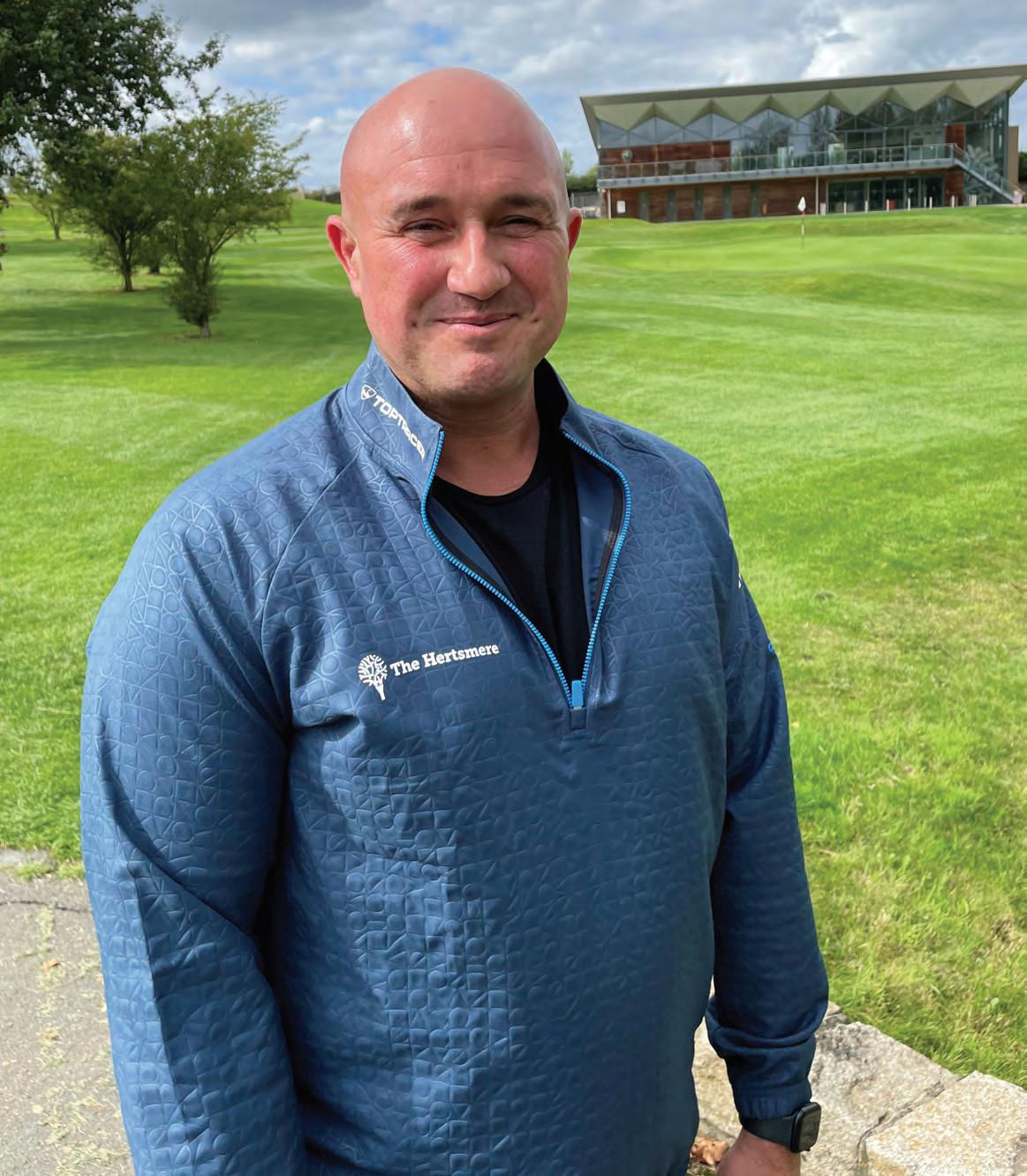
As we swiflty progress through October 2022, the men’s World Cup in Qatar is fast approaching, and activity is increasing for FIFA Senior Pitch Management Manager Alan Ferguson and his team


Vitalnova Stressbuster is a specially formulated liquid treatment to help condition turf against stress and also aid recovery from stress. www.icl-sf.co.uk www.icl-sf.ie e





Researched, formulated and produced in house by ICL

Many of you will have seen the news surrounding the launch of a new industry event. GroundsFest will be held at Stoneleigh Park, Warwickshire on 20th and 21st September 2023.

The event boasts outdoor demonstrations, indoor zones, free education, interactive workstations, machinery workshops, a wellbeing hub, a live music festival plus much more and is set to be the annual must-attend event for grounds staff, greenkeepers, landscapers, local authorities, estate managers and contractors.
Obviously, the news was bound to stir emotion surrounding the requirement for a new show. But the GroundsFest team responded with: “GroundsFest is everything that the industry wants in an event and we have a highly experienced team to deliver it. We are also looking to work with the associations within the whole sector to bring the industry together.”
I personally believe that the format for the show which includes live demonstration areas and interactive workstations is what exhibitors have been wishing for an event and what visitors want. I’m sure it will be a huge success.
There have also been some major changes recently with the development of Sports Turf Apprenticeships and a desire to develop a new higher level 5.

Having clear progression routes for those wishing to take the next step in management and demonstrate career opportunities is an important part of the narrative to further professionalise and attract personnel into the turf industry.


To this end, the next step is to apply for the development of a level 5 in Sports Turf, in parity with the level 5 Golf Course Manager Apprenticeship that is currently available.
For those wishing to progress from their current level 2 on to a level 3, there is good news! The level 3 sports turf apprenticeship will be reinstated.
The work of the Employer Trailblazer group has been critical to the development of these qualifications and I commend everyone involved.
Last issue I alluded to developments and new relationships and I can now reveal that we recently announed a strategic partnership with TSP Media as our sales and advertising partner.
The TSP partnership coincides with some key media changes for 2023, which include increased focus on topical news and information, invigorating our digital journalism and improving our sustainable footprint too - TSP are well placed to help achieve this with their wealth of industry expertise and will take the lead on sales and advertising.
I’m both delighted and excited about the new partnership and the opportunities and development it will provide for our readership and Pitchcare audience. TSP offer a progressive approach to advertising and media which will enable us to enhance and develop relationships with the companies that operate in the turf care sector.
There will also be some big changes in the format and design of the magazine from next issue and we invite you to let us know if your club wish to be involved in a feature.
A course borne out of the golf boom in the early 80s has a new name and new image after something of a decline under previous ownership. Neville Johnson went there to hear about plans for a dramatic turn-around from head greenkeeper Matthew Ephgrave, and what is already under way. P12
The opportunity for UK racegoers to attend a Breeders Cup-style race meeting, with action under floodlights on both turf and all-weather tracks, comes ever nearer with Chelmsford City Racecourse preparing to launch its new turf track, Jane Carley reports. P62
Yorkshire Sculpture Park (YSP) is one of the landscape gems of Britain. Mowing forms only a fraction of the maintenance strategy and Greg Rhodes reports. P68

Electric turfcare machinery is, as we know, the future of the industry, it’s the reality we’re moving towards. Many greenkeeping professionals are understandably concerned about how this will impact their business, especially economically. Toro Commercial products considers the comparisons and crunches the figures. P78
Like so many course managers, Jack Percival excels at turf management, but when Phil Helmn visited recently, he discovered that he excels at the other, and equally important aspects of the job, which are motivating, teaching, communicating, leading and supporting his workforce. P20

Canny farm experience is making a big impression on a once rundown Kent course. Kent farmer Jack Skinner bought The Ridge Golf Club, next door to his 180-acre Friday Street Farm, five years ago which he runs with his wife Sophie as well as a tight greens team that numbers just three in winter. Greg Rhodes discovers. P28
As we swiflty progress through October 2022, the men’s World Cup in Qatar is fast approaching, and activity is increasing for FIFA Senior Pitch Management Manager Alan Ferguson and his team. P36

All eyes were on Birmingham this summer, as the XXII Commonwealth Games took over the second city. The legacy of the Games isn’t only evident through investment in international sporting venues, but in grassroots clubs tooand Moseley Cricket Club is a prime example.
Picture this... you and your team have just prepared greens for a global, televised event and you’ve now got less than three weeks to turn them around for the National Championships. Oh, and in between, the club members that also patronise the greens would quite like to play on them!
This is the challenge that faced Warwick District Council and the idverde Warwick sports maintenance team, headed up by Mike Finch. Jane Carley reports. P54
With a real ‘recruit, reward and retain’ crisis still raging, popular trainer and conference speaker Frank Newberry explains what he is currently doing to help people to get better jobs, and pay rises, in the turfcare sector. He answers the question - should you stay in the turfcare profession, or should you leave? P84
The new Toro ProCore 648s. It’s your favourite aerator but better.





Building on the incredible legacy of the Toro ProCore 648, the new 648s brings even more innovative features to the time-tested machine that changed the way you aerate. The s means superior – and superior it is. Revised controls improve ergonomics and allow single-handed operation. Hole spacing and true tine depth are now set and saved in the InfoCentre. The ProCore 648s, it’s the new gold standard of greens aeration.















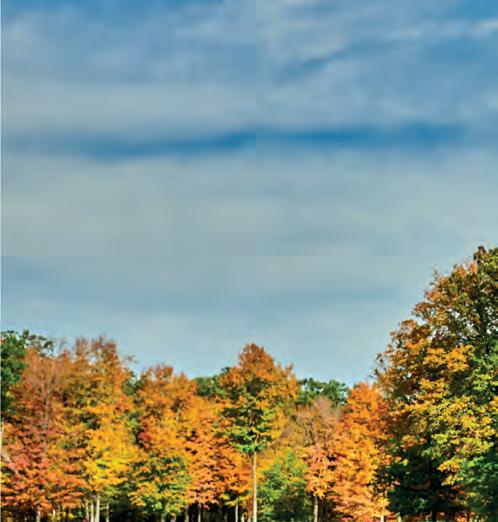 Reesink
Reesink

Now in its 10th year, the Allett Mowers annual Creative Lawn Stripes Competition once again attracted entries from all over the world. The prize is an Allett Liberty 43 mower with all cartridges and two cartridge stands.
The aim of the competition is to encourage homeowners to use their lawns to design the most creative, eye-catching designs that truly show off the craftsmanship and dedication that goes into grass maintenance. The standard of this year’s entries has again been exceptional, and it gets better year on year. This year’s judge was 2021 Champion Dennis West of Provo, Utah, USA following an internal vote done by a specialist Allett panel with the top six entries forwarded to Dennis to choose the winner.
The top six entries came from England, Wales, Australia and Canada and the 2022 Champion is Edward Aitken, Head Gardener at Cornbury House, Oxfordshire. Cornbury Park is a private estate in the town of Charlbury, fifteen miles from Oxford, England. The estate includes 1,700 acres of the most ancient forest in Britain.
A new and exciting event featuring outdoor demonstrations, indoor zones, free education, interactive workstations, machinery workshops, a wellbeing hub, a live music festival plus much more.
Set to be the annual mustattend event for grounds staff, greenkeepers, landscapers, local authorities, estate managers and contractors, GroundsFest will be held at Stoneleigh Park, Warwickshire on 20 and 21 September 2023.
GroundsFest’s main features include: Outdoor demonstrations - visitors will get to see machinery in action on large outdoor areas.
Indoor zones - a wide variety of exhibitor stands, dedicated sector areas, catering outlets and seminar theatres.
Live interactive stations - a chance to find out the latest trial data on pesticides, fertilisers, bio-stimulants and many more.
Machinery workshops - learn how to maintain and get the very best out of a wide range of machinery and equipment.
Educational seminars - free educational seminars delivered by top speakers and industry experts.
Wellbeing hub - designed to provide information, advice, and guidance about emotional and mental wellbeing.
Festival - after an action-packed day, unwind and continue networking with live music, delicious street food, and fun, skill-based activities.
The event has been created based on extensive research and independent surveys over the past six years. The results show that September is the most favoured time of year and that a mix of both indoor space and outdoor demonstrations is the preferred format.
From an exhibitor point of view, GroundsFest is extremely costeffective in comparison to other events which opens the doors for a much wider range of companies.

GroundsFest is brought to you by award-winning event specialists that have worked in the groundscare industry for over two decades.
For more information, please visit www.groundsfest.com
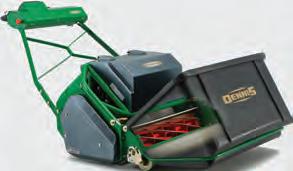
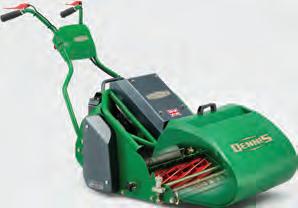

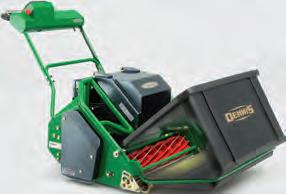
Over the past year, Pitchcare have seen many internal changes in the team and we are excited to reveal a new relationship with TSP Media as our sales and advertising partner.
TSP are a dynamic B2B publisher, with industry titles including LAPU and LAPG to name but a few. Many Pitchcare advertisers will already have a great relationship with the TSP team and we are confident, through a new publishing strategy, that they can help us move our print and digital media forward.

The TSP partnership coincides with some key media changes for 2023, which include increased focus on topical news and information, invigorating our digital journalism and improving our sustainable footprint too - TSP are well placed to help achieve this with their wealth of
industry expertise and will take the lead on sales and advertising.



Pitchcare Editor Kerry Haywood commented: “I’m both delighted and excited about the new partnership and the opportunities and development it will provide for our readership and Pitchcare audience. TSP offer a progressive approach to advertising and media which will enable us to enhance and develop relationships with the companies that operate in the turf care sector.”
Head of the TSP Landscape Division, Kellie Wake, said the new agreement was an exciting opportunity for both
titles. “The Pitchcare name is firmly established within the industry and we are pleased and excited to help develop the commercial potential of the magazine and website,” she explained. “I am looking forward to working closely with Pitchcare’s editor Kerry Haywood and the rest of the team to build on the magazine’s existing strengths and identify new business development opportunities.”
We welcome you to join us at SALTEX 2022 (Stand C065) to speak more about the partnership and reveal new developments for our exciting Pitchcare future.
The British and International Golf Greenkeepers Association (BIGGA) and Premium Partner ICL have revealed the five participants of the seventh ICL Continue to Learn Scholarship.
The five BIGGA members, drawn from golf clubs across the United Kingdom, have been invited to attend the Continue to Learn education programme, considered the largest learning experience for those in sports turf management outside the United States.
Continue to Learn is held each January and coincides with the BIGGA Turf Management Exhibition (BTME), at the Harrogate Convention Centre in North Yorkshire.
To earn an ICL Continue to Learn Scholarship, BIGGA members must demonstrate a commitment to developing their own professional abilities by engaging with BIGGA’s Continuing Professional Development scheme. Whether
through in-person learning, reading the association’s magazine, Greenkeeper International, or by accessing resources on the association’s website, BIGGA members have access to thousands of learning opportunities, all aimed at helping improve their professional abilities.
The ICL Continue to Learn Scholars will receive three nights’ hotel accommodation and a comprehensive education package offering an array of personal development opportunities.
BIGGA Chief Operating Officer Sami Strutt said: “BIGGA appreciates that budgets are tight at the moment and that’s why we are providing more opportunities than ever before to
access the learning we provide for our members in new and more costeffective ways. That includes the latest Continue to Learn timetable, to be published early in October and featuring more free education opportunities than ever before.

“Thanks to ICL, five BIGGA members will also enjoy the countless hours of personal and professional development that come with attending BTME and Continue to Learn. Our sincere thanks are extended to ICL for their continued support of BIGGA and its members, particularly through the tough economic climate we are all currently navigating.”
Continue to Learn at BTME 2023 will take place in various venues including the Harrogate Convention Centre from 22 to 25 January 2023. For further information about BTME and Continue to Learn, visit www.btme.org.uk
Through the Turf Rewards loyalty scheme from ICL and Syngenta, BIGGA members are able to claim Continue to Learn education vouchers. For further information visit www.turfrewards.com

The Racecourse Association (RCA) is delighted to announce the winners of the Racecourse Groundstaff Awards for 2022.
Sponsored by Agrovista Amenity, DLF Seeds & Science and Duralock the award winners were decided by an industry panel made up of representatives from the Professional Jockeys Association (PJA), British Horseracing Authority (BHA) and National Trainers Federation (NTF).
The winners and runners up are deemed to have demonstrated the highest levels of commitment, innovation and excellence across the year to racecourse groundsmanship and turf husbandry.
The winners and runners up across the three racecourse categories are as follows;
Flat winner - York
Jump winner - Cartmel
Dual purpose winner - Ascot
Flat runner up - Salisbury Jump runner up - Warwick Dual purpose runner up - Ayr
The racecourses all showed tremendous commitment to improve their racing surfaces, welfare standards, stable areas, and the continued professional development (CPD) of the groundstaff team.
Ascot, Cartmel and York will all be in the running to be crowned the 2022 Racecourse Groundstaff Champion, at the RCA Showcase Awards.
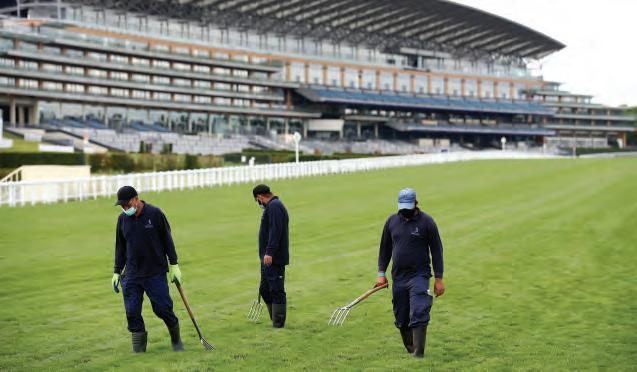
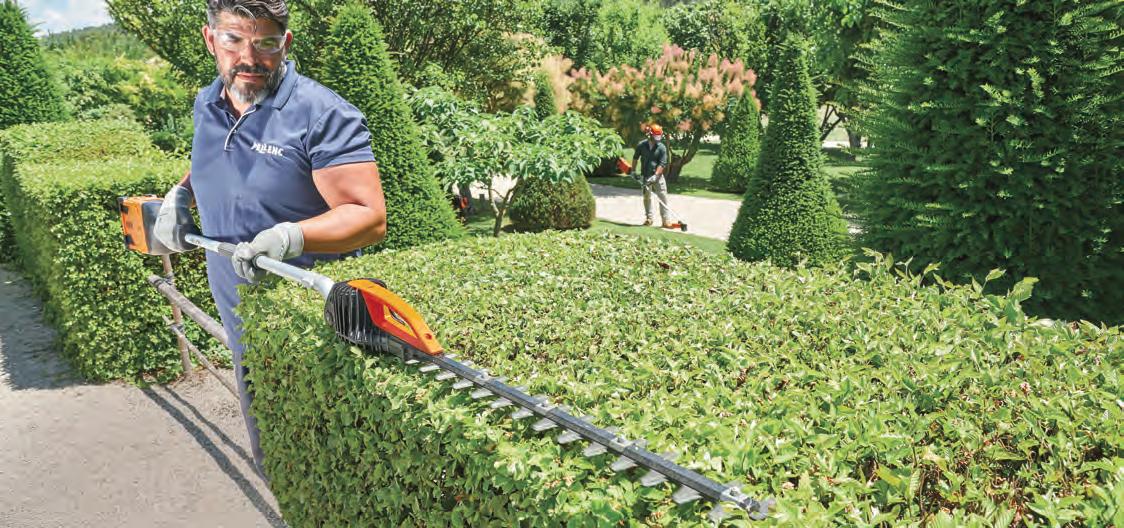
Apprenticeships in sports turf and greenkeeping are evolving with a desire to develop a new higher level sports turf level 5 apprenticeship. Recently, the (new standard) level 2 Sports Turf Operative Apprenticeship that was introduced in 2016 was under review by the representative employer group.
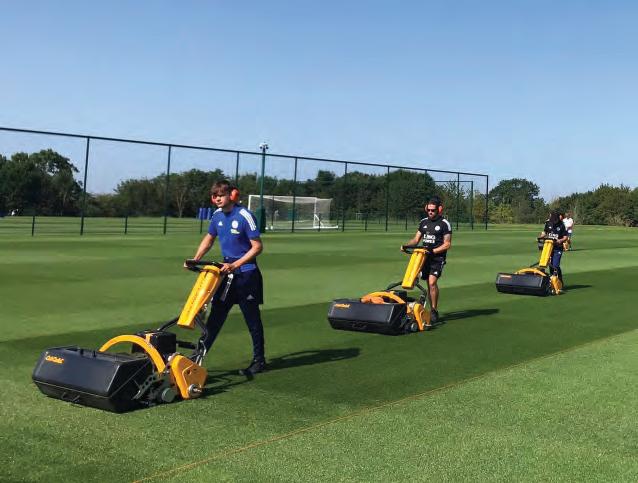
The revised standard will still have the end-point assessment (EPA) of an online exam, identifications and a practical day that covers the main tasks of sports turf over a 20-22 month period.
It will also have the addition of a professional discussion that would be based on an apprentice’s completed work-experience improving the delivery of the EPA process. New apprentices, should be able to be enrolled on this new version of the level 2 later in the year.
For those wishing to progress from their current level 2 on to a level 3, there is good news! The level 3 sports turf apprenticeship will be reinstated. This brand new apprenticeship titled ‘Advanced Sports Turf Technician’ release is imminent having been approved by IFATE (Institute for Apprenticeships and Technical Education) it is just awaiting sign off with the secretary of state in the Department for Education.
This level 3 apprenticeship will be available to those in sports turf, grounds maintenance and golf greenkeeping. As a level 3, it has a 24 month duration, with an emphasis to supervise, mentor, advise others, evaluate gathered data relating to sports turf performance, supervise project work, agree budgets, and communicate effectively with others. The required knowledge and skills will include overseeing the preparation of playing surfaces, using a range of technologies, estimating,
issuing maintenance plans, supervising machinery maintenance, soil water and moisture management, evaluating turf products (e.g. fertilisers, bio-stimulants, surfactants and plant protection products) and promoting sustainable surfaces amongst a good range of other criteria. Additional qualifications in pesticide application are mandatory and will be included in the funding, if not already achieved. Similarly, level 2 in maths and English (minimum GCSE Grade c / 4) will need to be achieved, if not already.
Having a clear progression route for those wishing to take the next step in management and demonstrate career opportunities is an important part of the narrative to further professionalise and attract personnel into the turf industry. To this end, the next step would be to apply for the development of a level 5 in sports turf, in parity with the level 5 Golf Course Manager Apprenticeship that is currently available.
Finding an Apprentice, training provider and the training requirements
Good advice for employers or managers seeking to recruit an apprentice, or even offer apprenticeships to existing employees, is first research a suitable training provider that fits your business. Day-release and/or visits by the training provider to the
workplace are the most common, there are a small number of providers that also offer block-release too. The apprentice will need to do ‘off-the-job training’. This is a set amount of time dedicated to training and learning related to the skills, knowledge and behaviours of the apprenticeship. This time does not form part of an ordinary day’s work, but is undertaken during work’s paid time, typically delivered by the training provider. This equates to one day or six hours per week (e.g. day-release), but this can be flexible (e.g. fluctuate depending on seasonal workload), again this goes back to finding a provider that fits your business’ needs. The remaining time of ‘Onthe-job training’ is training related to the apprentice’s job role and is delivered by the employer.
For the latest detailed information about apprenticeships, visit the following:
www.apprenticeships.gov.uk www.findapprenticeshiptraining. apprenticeships.education.gov. uk/courses
www.gov.uk/employing-anapprentice www.instituteforapprenticeships. org

The Grounds Management Association (GMA) has, after the impact of the pandemic and following the impact of global events, combined with the cost-ofliving crisis, focused on tackling the key issues highlighted by volunteers and professionals as priority areas to address in the grounds care industry.

Published alongside the GMA’s 2022 Workforce Survey, the reset of the GMA’s Five-Year Strategy first launched in 2021, outlines six key priority areas that will inform and influence the association’s work to help achieve three long-term goals:
• To attract new talent and accelerate the growth of a diverse workforce
• To support sustainable business growth and protect the sector’s interests
• To build industry reputation and promote the sector’s contribution to society and the economy
The six strategic priority areas are:
• Workforce development
• People and culture
• Services and support
• Industry representation
• Data and digitisation
• Funding and investment
GMA Chief Executive, Geoff Webb said: “We know the challenges that those working in the grounds care industry face and the findings from our Annual Workforce Survey echo those issues year after year. Whilst we have made progress since revealing the results of “Groundsmanship Sports Vital Profession” in 2019, the trends first identified remain.”
“The issues are far-reaching and to make a positive difference at pace, working together as a sector, we need a shift in mindset and outlook. Working collaboratively is
key to success. Members and others working in grounds care, those employing grounds staff, industry partners and suppliers, national governing bodies, professional leagues, the media, local authorities, and the education sector all have a role to play. It’s a team effort.”
The GMA’s latest report estimates that over 3,200 professional grounds managers are due to retire in the next three years and over a third of all grounds professionals are over the age of 55. The lack of young people joining the profession is evident with only 3% being under 25. A clear indication that the industry is facing a recruitment crisis and must act now to attract the next generation.
A lack of diversity also continues to be an issue in grounds management with white men still being the most dominant demographic working in the industry. 96% of professional grounds staff are male and only 3% are non-white, which is far from representative of the communities across the UK.
The report also highlights an issue with underinvestment in grounds management, both in terms of procuring the necessary equipment, and the salary levels paid to grounds staff. The association believes that there is a widespread lack of understanding of what skills, technical expertise, and equipment are required to maintain sports
grounds to a satisfactory standard. An issue that will be addressed by proactively promoting the work of grounds people and reiterating the message that with no ground, there’s no game.
GMA Chief Executive, Geoff Webb continues: “When Covid hit, like many, we focused resources on adapting to the ever-changing working environment, moving to remote working and facilitating longstanding face-to-face training and events online. Likewise, many worked with limited capacity and resources during this period, this impacted on many skilled ground staff and impacted on the ability of volunteers to spend the time attending to their clubs and facilities. We have to recognise that we are still in recovery and today are met with fresh challenges such as the cost of living, the impact on the supply chain and recruitment issues.
“We have reset having to contend with a delayed SALTEX which was a fantastic success last Autumn and have spent 2022 reviewing and resetting our strategy as well as building an expanded team. This year has been about getting the right people and resources in place and 2023 will see us move from capability building to implementation as we focus on the strategic priorities and long-term goals outlined in our Strategy.”
Founded in 2019, The FairWays Foundation has now completed its third grant cycle, bringing the total funding to $441,791 since its inception with 29 projects supported across the USA, Canada and UK.
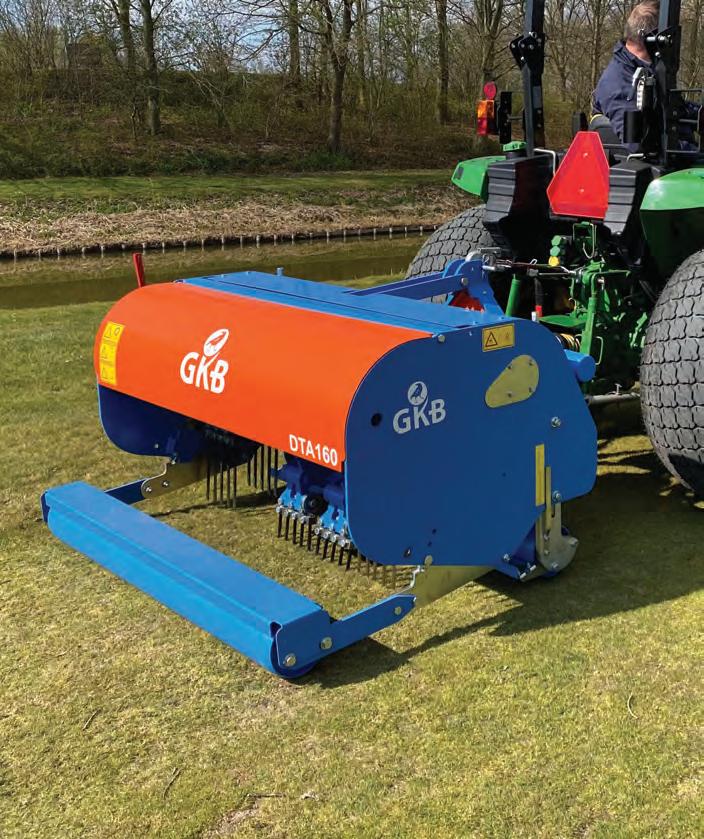
The FairWays Foundation is a stand-alone 501c3 not-forprofit organization dedicated to supporting and promoting conservation and stewardship within the turf industry and beyond. The foundation supports conservation-based projects both big and small by granting funds to successful applicants globally.

Twelve projects have been funded in the 2022 grant cycle, totalling $169,000 in funds. The Grant Committee and Board were delighted to review a diverse array of projects including a Great Salt Lake Field Trip program, the expansion of previously supported Irvine to Girvan Nectar Network, an on-course vegetable garden to serve the golf club
restaurant, the installation of bat boxes, restoring an agricultural field to prairie, phragmites removal, canal bank restoration and more.
Matt Foster, CEO & President of Aquatrols and President of The FairWays Foundation said, “We understand making a difference locally takes tremendous grit from a local champion. It might be a greenkeeper or parks manager or a programme volunteer. Regardless, without their will, these projects would never move forward. Our
message to those individuals out there with a wish for a healthier environment is The Fairways Foundation can help with the way to get there.”
The FairWays Foundation is looking for ambassadors to help reach those who wish to champion environmental projects but are unable to proceed due to lack of resources. Find out how you can apply and get involved by visiting: www. thefairwaysfoundation.com
knowledge of contracting to supply professionals with the ultimate turf maintenance solutions.
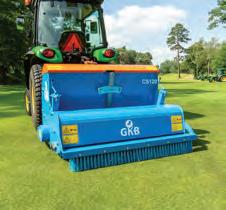
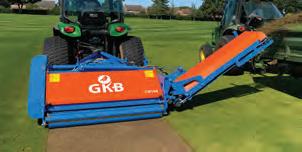
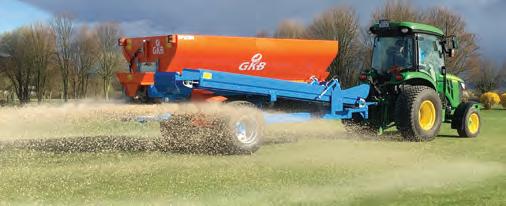
A course borne out of the golf boom in the early 80s has a new name and new image after something of a decline under previous ownership.
Neville Johnson went there to hear about plans for a dramatic turn-around from head greenkeeper Matthew Ephgrave, and what is already under way
After weeks of drought, this parkland course looks remarkably lush and welcoming in the Club Car ride to the tucked-away greenkeeping HQ. Golf was first played here in 1984 and its appearance now owes much to a re-design two years later by renowned architect Donald Steel. Eighteen holes over 6419 yards from the men’s tees were created as a gently undulating par 72 challenge for all abilities.
Until 18 months ago, this was Radlett Park Golf Club, and before that Elstree Golf Club, both private member clubs. New owners took over early last year and signaled their intent to develop a type of golf centre not at
all like a traditional club, by coming up with a new name - The Hertsmere - after the local county borough.
It’s already a flourishing pay and play centre, which also offers society and corporate golf days. Non-playing attractions include a network of countryside walking trails, and clubhouse balcony refreshment and dining overlooking the course. The plan is to keep it very much pay and play, but introduce limited membership for golfers wishing to play regularly.
The 180-acre site had been Hertfordshire farmland before its conversion to golf. London clay, a base for many an outer London and Home Counties course, is literally an underlying reason for course

difficulties and much of what’s happening and about to happen here.
Matt Ephgrave has worked on the course for 25 years, man and boy. He took over as head greenkeeper seven years ago. The way things have been managed in the last 18 months or so has bought a new lease of life to golf at the course and this is reflected in Matt’s own feelings about his role. He has seen good times and bad. His telling words summarise the changes afoot:
“My love and desire for the job has really come back in the last couple of years, after some tough times here,” he says.
The new owners and management set out to break all ties with the previous setup, which had a declining reputation as a
provider of decent, value for money golf. The new owners’ declared intent was for The Hertsmere not to be thought of as a club or indeed referred to as one.

The long-term vision, the interest in future planning, and the investment have altogether changed things here. Everything has been re-invigorated, it seems. The turn around is incomplete, but well under way.
There is a fresh approach, especially in the encouragement of younger players and attracting novices to the game. The driving range, the coaching facilities and the proposed new academy course are key ingredients. Links with local schools and summer camps, introducing golf as a worthy sport, are already in place and part of this
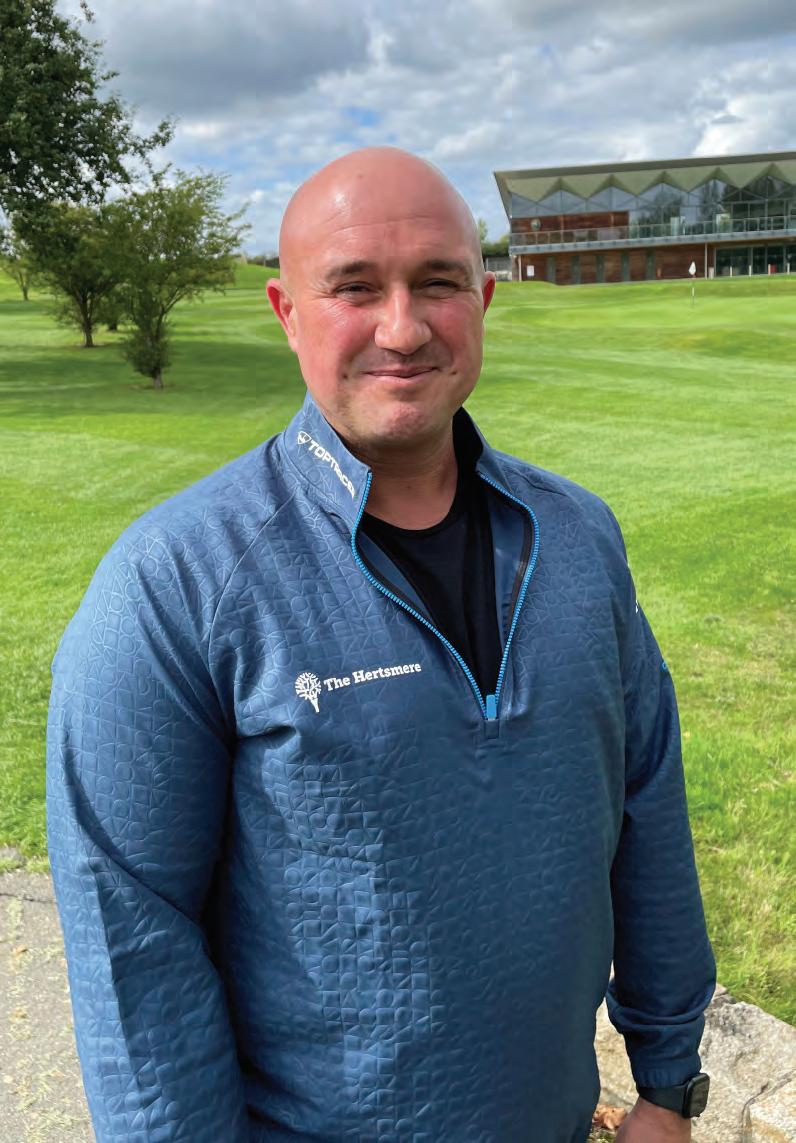
We are in early stages of becoming Golf Environmental Organisation (GEO) certified, and sustainability is becoming a big part of The Hertsmere’s forward thinking
“GOLF Head Greenkeeper Matthew Ephgrave A delightful parkland course for all abilities
modernisation. Only the day before, a party of pupils from nearby Haberdashers School had visited The Hertsmere to get a taste of its facilities.
There had been a driving range at the Radlett Club, but it had become neglected and pretty much shut down. It was really just an empty shell, a redundant facility. Since the birth of The Hertsmere, over £300,000 has been invested in a massive upgrade of this with state of the art technology. The fully refurbished, 26 bay Toptracer range offers an interactive experience to golfers, whilst drinks and light snacks are even available to each of the bays by touch screen order to
an on-site food shack.
Golfers at The Hertsmere also get the opportunity to experience a 30-minute assessment of stance and golf swing by one of its professional coaches who will suggest an appropriate programme to achieve improvement.
Suitable for any golfers at any level is a computerised simulator that enables play and shot assessment on some of the world’s elite courses, including St Andrews and Real Club Valderama. This provides a real game feel and helps golfers analyse their swing and general play. It also means a game of golf can be enjoyed when the weather makes it unpleasant outside.
The new simulator is part of a number of new facilities recently opened, including a new Srixon Centre of Excellence and custom ball and club fitting facility.
This is all part of The Hertsmere’s aim of creating a total golf experience and education accessible to everyone, regardless of budget or ability.


The impressive looking clubhouse is also undergoing a significant indoor refurbishment, upgrading its refreshment
 September overseeding of the greens
Trees, pleasing but in places troublesome
The 1st hole - re-wilding introduced to aid definition and boost ecology
September overseeding of the greens
Trees, pleasing but in places troublesome
The 1st hole - re-wilding introduced to aid definition and boost ecology
Alongside the creation of a golf academy, means the foundations are laid, as we progress our plans to become the home of family golf
and dining facilities, which should be completed in January.
For the parkland course itself, though delightful in appearance and setting, the problems that have built up in the past will take longer to redress. Things are well under way though and momentum is gathering.
There is an abundance of trees, many of them planted after the re-design in 1986. Some, notably poplars, have added to the already inherent problems of a golf course
built on London clay, causing damage to drainage channels. The lifespan of poplars is only about forty years, so many of them are close to that and removal would be timely and sensible.

In the past, there had been unfavourable comments from golfers about how such an otherwise beautiful course could so regularly be muddy and unplayable in very wet conditions. Matt had grown to accept this and that closure was an inevitable





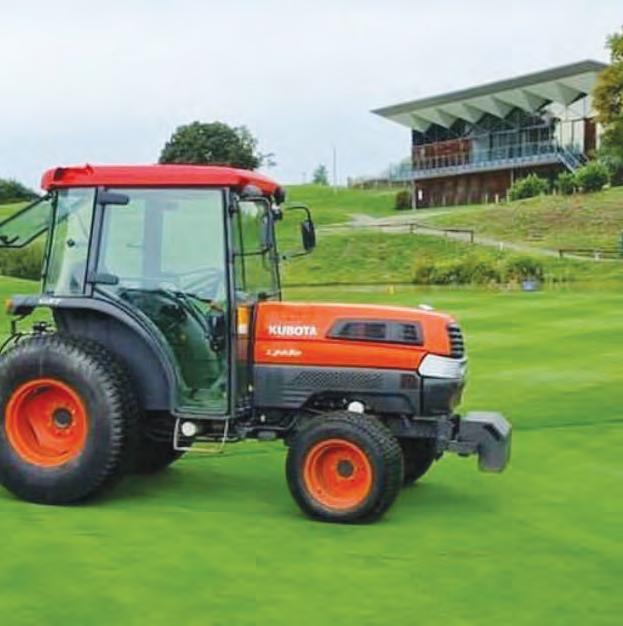 The approach to the 4th hole
The approach to the 4th hole
My love and desire for the job has really come back in the last couple of years, after some tough times here
“
outcome over the winter months, an irksome disappointment to golfers and a dent in income to the Radlett Club. It was frustrating that there was no investment to tackle the issue. However unsatisfactory, it was just how things were.
The London clay meant that conditions would, year after year, produce winter waterlogging, so bad that you struggle to walk up some of the fairways, let alone play shots. The converse, and a slight benefit of London clay, is that it holds moisture in summer, which in unexceptional yearsunlike 2022 - helps keep things green.
Matt uses verti-draining, calling in contractors A T Bone, to control drainage as much as he can, but the plan going forward is to install a new system for the front nine and remove some of the unhelpful trees. He has called upon the expertise of R&A
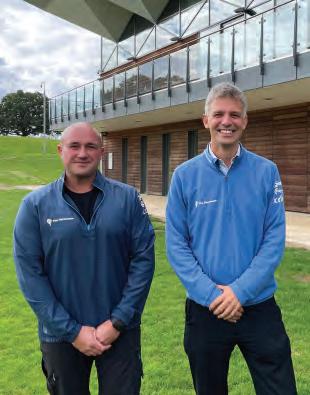

agronomist Gordon Howat for a precise opinion, so that a practical plan can be put into action soonest. Matt knows he can now count on the financial backing of management for this and his enthusiasm is palpable.
“All year round playability is a prospect at last. No more dispiriting closures for as long as three months,” he says.
Gordon Howat has been to the course a number of times in recent months and will continue to do so to extend his investigations.
Closure for the renovation work likely next year is inevitable, of course, but Matt is sure everyone will accept that as a small price worth paying. Drainage is the number one issue and it has to be put right.
Irrigation, the other bête noire, relies on a system installed in the late 1980s and very much needs updating. There are a lot of repairs along the length of it. Only now, in mid-September, do the fairways offer a consistently verdant appearance, and this year with extended drought and record temperatures, the contrast has been more marked than ever. Matt says he is delighted how well it has bounced back from the effects of such an arid summer.
The irrigation issues in summer are
 Words of intent in the driving range
Words of intent in the driving range
Having further developed our beautiful golf course and spectacular driving range, and with the clubhouse refurbishment plans in place, we believe that we are progressively offering some of the best facilities in the area
nowhere near as harmful as winter waterlogging. At least in dry times, Matt and his team are able to do something about the really dry stretches by hand watering if need be. Upgrading the irrigation system is, however, on Matt’s shopping list and The Hertsmere management is looking seriously at a wider sustainability programme, which will probably include rainwater storage and reservoir construction.
Currently, irrigation is mains sourced,
which is sure to grow in cost terms, and as there is no chance of new boreholes locally, rainwater harvesting is a good option and this is being seriously explored. This summer, some of the fairways actually cracked open because of the drought.









“We are in early stages of becoming Golf Environmental Organisation (GEO) certified, and sustainability is becoming a big part of The Hertsmere’s forward thinking,” says Matt.







The big frustration for Matt is that it is such a lovely course and plays beautifully in decent conditions. The hope - and expectation - is that this will be the final ‘winter of discontent’. The already hugely popular 26-bay driving range and associated coaching facilities will be a saving grace in terms of income.
“The course improvement project is a huge one, but I’m very confident it will happen, and quite soon,” says Matt.

The G-261 ride-on mower combines powerful and versatile mowing options with superb user friendliness, enabling you tackle the most demanding tasks with ease.

High-torque and fuel-efficient, Kubota Stage V diesel engine providing the solid foundation for excellent mowing. Powerful HST gearbox guarantees the highest works speeds without compromising cutting performance. Designed for effortless operation with a grass collector, offering the fastest lifting and opening speed in its class. Optional rear-discharge deck for high-capacity mowing/mulching (also available as G-261RD only). 2-year warranty as standard, backed by Kubota’s nationwide dealer network.
Contact
 Green and pleasant again after weeks of drought
Green and pleasant again after weeks of drought
All year round playability is a prospect at last. No more dispiriting closures for as long as three months
“
Toro 3250 greens mower
Toro 3420 Triflex greens mower
Toro 5510 fairway mower
Toro 3100 D fairway mower
Toro 3500 D trim and surrounds mower
Toro 648 Pro-core walk-behind aerator
Kubota STV 40 compact tractor
Kubota L5030 tractor Sweep N Fill brush
John Deere 2500A greens mower
Hayter Harrier 56 x 3 walk-behind mowers
Tru-Turf turf iron Dakota 410 Spreader
Thwaites 3 tonne dumper
Kubota Kx-71 excavator
Trilo vacuum leaf collector
Charterhouse 7316 Verti-drain Foley grinders x 2 Mitsubishi L200 truck
Various Stihl blowers/chainsaws/ strimmers
Also in planning is a 12-hole academy course, with two loops of six, designed by architect Tom McKenzie. Any water harvesting facilties will likely as not mean some amendments will have to be made to the main course too.
Matt knows The Hertsmere course like the back of his hand. He heads up a team of six in all, with Barry Stone his assistant, three greenkeepers, and an apprentice. Barry has worked at seven previous courses including Harbour Town in South Carolina, USA and the Trump International Golf Links, Aberdeen. His experience is invaluable to Matt.
The course improvement project is a huge one, but I’m very confident it will happen, and quite soon
The Hertsmere owns all of its greenkeeping equipment. Matt says the new ownership has been extremely supportive since it took over at the beginning of last year, spending over £50,000 on two new Foley blade grinders, over £70,000 on a rough mower and adding a new utility vehicle.

“The support from the management has been incredible when it comes to our machinery requirements. They listen to our needs and have delivered every time,” says Matt.
“The management are also big on staff training and development, which is refreshing and good for individuals and the business.”
Matt does call in outside help if needed, and in September for the first time all the greens were overseeded. Their grass cover, although 90 per cent Poa, has never actually been a problem, but as part of the long term upgrading, there is a big effort to introduce better disease tolerant species to aid play. Johnsons Pure Browntop Bent was introduced by contractor Turf Tonics.
Matt has his fingers crossed for a cold dry winter, which cuts waterlogging and minimises turf disease. For the time being, excessive rain is bad news commercially at the Hertsmere, but not for much longer.
The Hertsmere’s General Manager, Jonathan Gray puts its mission statement into words: “Having further developed our beautiful golf course and spectacular driving range, and with the clubhouse refurbishment plans in place, we believe that we are progressively offering some of the best facilities in the area.”

“This, alongside the creation of a golf academy that is ground-breaking in its approach to coaching, means the foundations are laid, as we progress our plans to become the home of family golf in Hertfordshire and north west London.”
The Hertsmere is fast becoming one of the most accessible, welcoming and exciting golf courses in this area. Google reviews of the course have been exceptional since the transition. There are exciting times ahead for golfers and greenkeepers here.
 Monitor your driving
Monitor your driving

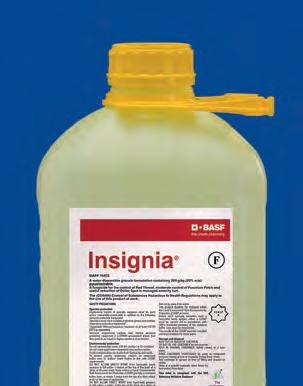






Like so many course managers, Jack Percival excels at turf management, but when Phil Helmn visited recently, he discovered that he excels at the other, and equally important aspects of the job, which are motivating, teaching, communicating, leading and supporting his workforce
Team building is especially important to me. Not only do I get immense pleasure from nurturing my team, but I know it helps them in their day-to-day work, knowing that they are respected and supported by me
Chipstead Golf Club’s parkland 18-hole golf course nestles just north of the Surrey Hills area of national beauty, which also forms part of the South Downs National Park. It provides an enjoyable challenge for golfers of all abilities with its modest par 68, 5504-yard layout. That said, this course is no push over! It’s deceptively difficult due to highly contoured fairways and tricky, well-placed bunkering, making for thoughtful shot making over simple brute force!

In 1906, a group of one hundred supporters duly sponsored the establishment of Chipstead Golf Club and their names appear on an original document held at the club. Their enthusiasm coincided with the rapid expansion of housing in the then village of Chipstead as the professional classes moved out of London into the leafy suburbs.
Confirmation has only recently become known that James Braid (five times British Open winner and head professional at the nearby Walton Heath) had a considerable influence on the design of the course. Interestingly, Braid’s contract required him to obtain special permission from his ‘home’ club to work at Chipstead, as it fell within a six-mile radius of Walton Heath and would have been deemed ‘competition’ for membership recruitment.
The golf club did not escape the ravages of the Great War and the course was reduced to nine holes. During the Second World War, hoops were erected on the course to prevent enemy aircraft from landing and a long defensive ditch was excavated and filled with concrete impedimenta to serve as a tank trap. Three blockhouses were constructed on the course and craters appeared (which are still visible) when enemy aircraft dropped surplus bombs after raids on Croydon and
Kenley. Over the years, the club could boast many famous members, but one that sticks out is Ian Caldwell who joined the club as a junior around 1940. In 1946 and 1947, he won the Carris Trophy for schoolchildren, and this led on to Walker Cup appearances, although at the same time he was a qualified and practising dentist. In 1961, he won the English amateur title in dramatic fashion holing a putt on the last green to stay in the match and then winning the first play-off hole. His golf career ended at Sunningdale, and he remains the only golfer to have won the English boys’, men’s and seniors’ amateur titles in one lifetime.
After 1945, the course was slowly restored back to its 18-hole status. In 1964, the sequencing of the holes was
modified to reduce hill climbing at the end of the round and place the 10th tee nearer the clubhouse. The old and ageing clubhouse was demolished and a new, more modern and inviting clubhouse was built, opening in 1994, with the golf club acquiring the freehold of the land in 1996.

All about Jack
Jack’s career started out in an unassuming way. His first role was as a groundworker for Country Grounds Maintenance, lasting a year, but as with so many of us it got him hooked on working out in the great outdoors. A couple of quick career moves from Purley Downs Golf

Club as assistant, then to nearby Addington Golf Club as mechanic/ greenkeeper followed before moving to Aquarius Golf Club as Course Manager in 2016. During his time at Purley, he progressed his mechanical skills with a subsidiary venture running his own repair business called Percy’s Turf machinery. One year on and he got his opportunity to join the Chipstead Golf Club team, which he jumped at, working under the leadership of the then Course manager Sam Bethell.
Jack was quick to mention that his own turf management regime has followed on from the great work Sam had previously introduced at the club (with enormous success), and as the old adage says, ‘Don’t fix something that’s not broken’! Obviously, since Jack’s appointment in July 2021 as the head man, he has modified some of his nutrient regimes and tweaked seeding and dressing operations and varieties; but as Jack explained, his main agronomic alterations have centred around intensive dwarf rye overseeding of the tees using a Barenbrug ultrafine mix and introducing creeping bent to his poa/colonial bent mix established greens.
Jumping back a little, if I may, the reason
Course Manager, Jack PercivalIt has taken me a long time to realise that data and research can’t easily be argued with when you walk into the boardroom asking for either more labour, machinery or materials
I make sure everyone on the team understands what we are doing on the golf course, what we are spraying, applying or at what heights we are cutting
for my catch up was to learn how he was faring on the other major aspect of his managerial role - the part that centres around people! Before I expand on my findings, I need to give you all a little insight.
For those who don’t know Jack, you must understand he is a very driven young man with a passion for learning. No surprise then that I remember first meeting him at a BIGGA conference a couple of years ago, and since then we’ve stayed connected regularly.
Worth noting at this point, and one which many in the turf Twitter world will already know, Jack does some amazing work with the homeless around his local stomping ground of Croyden; making sure they are fed, properly clothed and felt cared for in general. It’s wonderful the work he does in the community, and I believe the empathy and support he demonstrates out on the streets to those who need it the most has helped him and benefited him
in his new role.



Like so many course managers, he excels at turf management, but for me, he excels at the other, and equally important aspects of the job, which are motivating, teaching, communicating, leading and supporting his workforce. Using the D.I.S.C. personality type theory (we’re all broken down into four coloured characteristic types), Jack is a great example of a ‘green/blue’ type leader.
Greens are excellent at teambuilding,































L I T E
U LTIR P R
A table-topping line-up* for wear, colour, recovery and disease resistance to keep you pitch-perfect all season long.
Who are you? Jack Percivalcourse manager at Chipstead Golf Club - age 27.
Family status. Two beautiful and energetic young boys. Stanley aged three and Jack aged seven.
Who’s your hero and why? I have a few, but I think the lady (Karen) who took me in off the streets has got to be number one. Without her, I would not have been here now.
What’s been the highlight of your career so far? Becoming course manager at twenty-six. It was a target of mine as soon as I started greenkeeping aged eighteen.

If your younger self saw you now, what would he think? I reckon he would be proud. If I look back to when I was younger, I didn’t have any focus or drive to do anything with myself, but get in trouble.
Which famous people wind you up? It’s extremely hard for me to get wound up or angry. It’s something I don’t let happen. I go with the flow and make the best out of any bad situation. Liars I can’t stand, so probably certain politicians.
What job would you love, other than your own? Paramedic.
What was the most embarrassing moment in your life? Splitting my shorts on holiday at the start of the night was bad.
What is your favourite film? This is England or The Business.
What scares you? Failure, especially if I have set my mind on something.
What would your autobiography be called and who would play you in the film? In the life of Percy.
What is your favourite sport? I enjoy watching football and I like to take part in boxing.
What would you cast into room 101? I had to Google this… ha-ha! I don’t watch TV unless its sport. The TV sits blank most of the week.
Which historical time and place would you most like to visit? WWII. I would love to see how my grandad earned his medals.
Which three people, living or dead, would you invite to a dinner party? Tyson Fury, Karen (the lady who took me in) and Paul Gascoigne.
What’s the best advice you have ever been given? Take five whenever you’re in a tough situation before making a silly decision.
What’s your favourite piece of kit? Hand mowers. I love the detail they give.
Which three albums would you take to a desert island? Arctic monkeys - Whatever people say I am, that’s what I’m not. Ben Howard - Every kingdom and Any Beres Hammond album.
What’s the daftest work-related question you have ever been asked? What time do you start? It’s 2pm isn’t it?
What three words best describe yourself? Hyper, caring and soft.
What is the single most useful thing you could tell a 16-year-old greenkeeper? Stick at it, work hard and talent and drive will pay off
What talent would you like to have? Cure world hunger. We all deserve a hot meal and clothes on our back.
What law/legislation would you like to see introduced? Tougher punishments for rapists and paedophiles.
collaborating, and supporting people and ideas. They are inclusive and will seek to gain input and consensus from the team before making decisions. They encourage everyone to participate and view everyone as valuable contributors. Jack’s other ‘colour style’ is blue, which relies on facts and figures. They are driven by information gathering, analysing, and developing solutions.
Jack explained, “As an example, I gather data on most of my operations - how many hours the guys spend raking bunkers, edging and weeding them, topping them up with sand and how much sand we use annually to do this. It’s very powerful


information when I need to ask for more money to maintain what is probably the biggest drain on my operational budget!”
Jack also gathers data on the hours taken to cut every surface, from greens and tees to semi rough and natural rough areas. He logs hours taken to maintain and repair his machinery fleet, and this helps him inform the club of replacement equipment requirements in the future. “Data is key to helping me explain what is going on and helps me argue for things I need,” said Jack. “Indeed, it has taken me a long time to realise that data and research can’t easily be argued with when you walk into the boardroom asking for either more
Jack Percival - We all deserve a hot meal and clothes on our back!
labour, machinery or materials.”
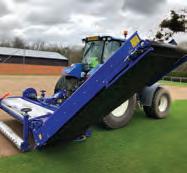
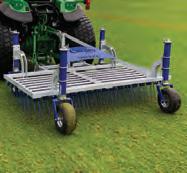
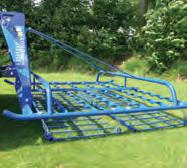

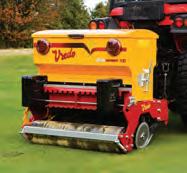
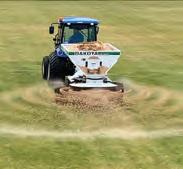
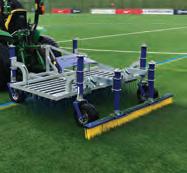

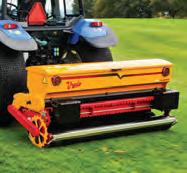
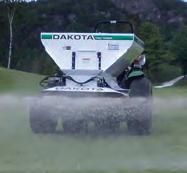
So ‘blue’ leadership traits are vital in successful management situations, but so too are ‘green’ leadership styles. Jack has an abundance of these, and I was interested to learn how he has adapted these into more practical situations. He explained, “Team building is especially important to me. Not only do I get immense pleasure

from nurturing my team, but I know it helps them in their day-to-day work, knowing that they are respected and supported by me.” He went on,” I am very conscious about praising good work, not only by sending text messages directly to team members thanking them for a job well done, but also by rewarding team effort with either organising a group BBQ after work or simply
buying them all a pint down the pub on a Friday evening! I believe in healthy banter as it promotes a sense of fun in the workplace, but I do make sure it is friendly and kind ‘leg pulling’, I don’t tolerate any other type. Overall, positivity is infectious, and I try to promote this by printing out great feedback messages from the members for everyone to read. I pin up, on our team notice board,
The guys look very smart when out on the golf course. If they look professional, then I’ve found it emanates into their standard of work
“

John Deere ProGator with Dakota topdresser
John Deere ProGator with HD200 sprayer
John Deere HPX utility vehicles x 2
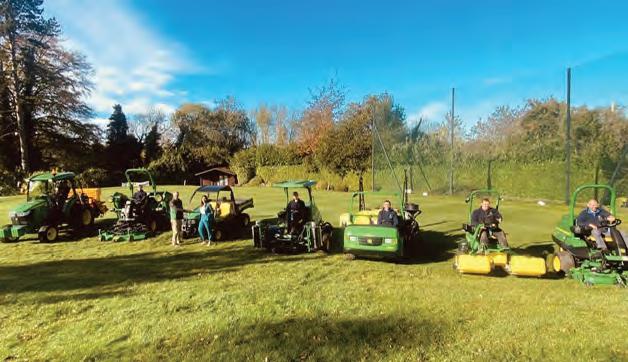
John Deere 220SL walk greens mowers x 2
Smithco greens roller
John Deere 2750 triplex mower
John Deere 2550 greens mower
John Deere 7400A rough mower
John Deere 4066R tractor
Wiedenmann Terra Spike Toro ProCore
John Deere 1600 rotary mower
John Deere 770A motor grader
Vredo 214.07.5 seeder
Double A Sweep N fill brush
TYM tractor
Charterhouse Verti-Drain
Trilo leaf blower
Trilo S3 vacuum sweeper GreenTek multi-brush
SISIS Autoslit
1T tipping trailer
4T tipping trailer

encouraging quotes I find, which I feel drives positive values for us all.”
I began to realise the emphasis that Jack was placing, not only on positivity, but also that of professionalism. He explained that his team uniform is a little more ‘upmarket’ than you would usually see. The team at Chipstead wear tan chino trousers or shorts, golfing style shirts (from the club shop) and tan style safety boots. Not too reminiscent of my days working in Florida back in the day, I mentioned. Jack replied, “Yes, the guys look very smart when out on the golf course. If they look professional, then I’ve found it emanates into their standard of work. They look and feel professional, and when mixing with our golfing members and customers, we have a professional image.

Through communication, I make sure everyone on the team understands what we are doing on the golf course, what we are spraying, applying or at what heights we are cutting. In that way, when a golfer asks anyone of us a question, we know the answer. It makes us look proficient and knowledgeable. I believe having a pride in the badge is particularly important.”
By now, you will not be surprised to learn that Jack has a comprehensive performance
review process. It’s a system which supports his team to deliver excellence through constant communication, in the form of quarterly 1-to-1 meetings and goals/aspiration targets. He actively seeks feedback and he encourages his team to look for the same. In that way, he and his team can deliver improvements to the benefit of the golf course.
It was a treat to catch up with Jack and talk about turf, but especially people and teams. Although he is a huge team player, don’t be fooled that he doesn’t set himself some personal goals and targets! As a leader, its vitally important you nurture yourself too. To be effective for the team, you as a leader must be in a good place. Jack has set his own career goals centred around salary, educational and destination targets. These personal goals are vital in any leader’s development. I’ve come to learn that the more vivid a believable path you can visualise in your mind, the better the chance you have of achieving your aspirations. In other words, the more ‘real’ it is for you, the more achievable it will be! Thanks, Jack, for the catch up and all the best to you and your great team!
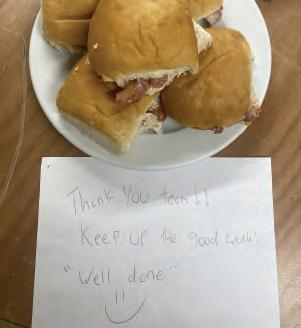
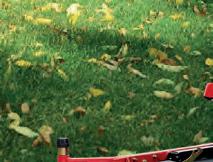









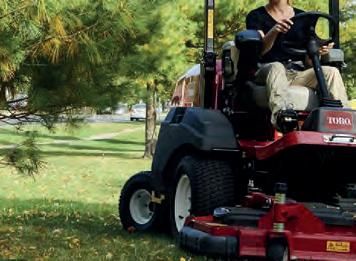
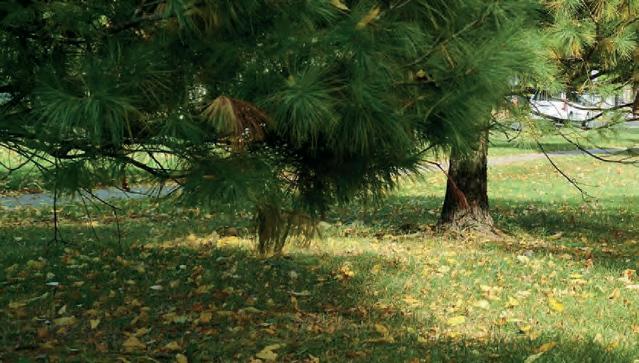

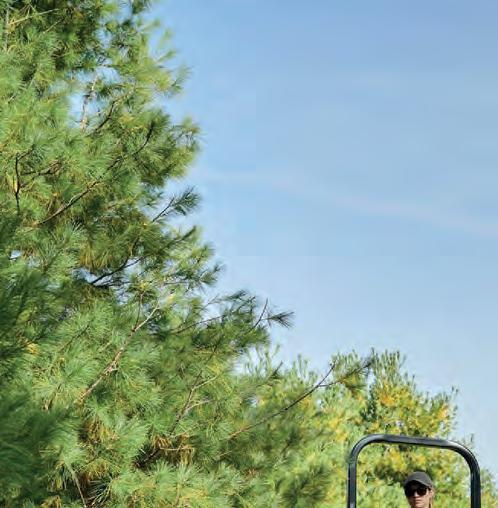

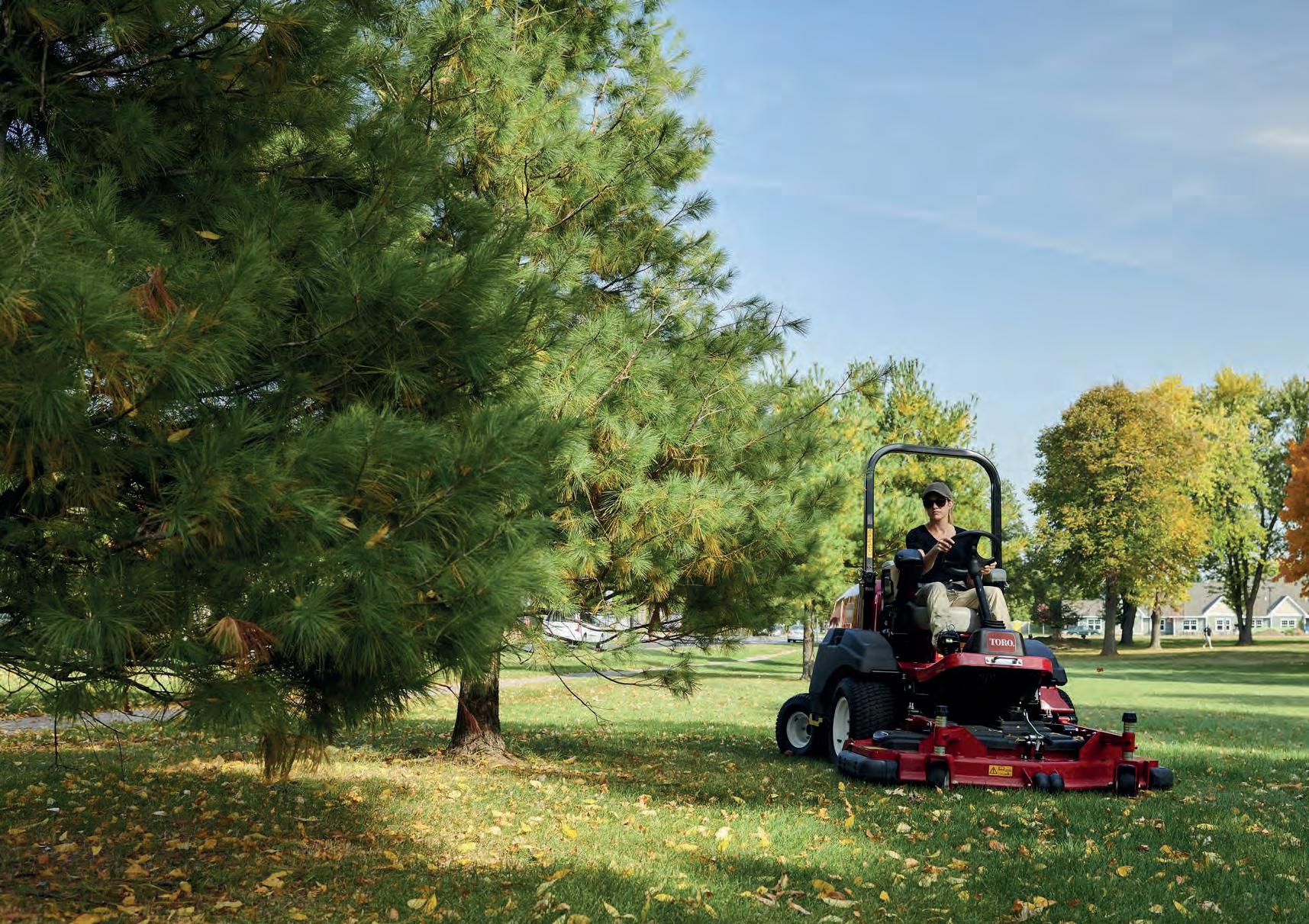

Robotic mower technology may not suit every course, but it fits the model of how we want the business to go. Bearing in mind the chronic shortage of labour and cost factors in the golf sector
Canny farm experience is making a big impression on a once rundown Kent course. Kent farmer Jack Skinner bought The Ridge Golf Club, next door to his 180-acre Friday Street Farm, five years ago which he runs with his wife Sophie as well as a tight greens team that numbers just three in winter.
Greg Rhodes discovers
He is the fifth generation of family farmers here, growing sixty acres of apples for supermarkets and cultivating an 11-acre Pinot Noir, Meunier and Chardonnay Vineyard for supply to winemakers. ‘I’m quite hands on,” he says, “and do mowing and vertidraining, helping the team with the big jobs.”
The 18-hole parkland course commands fine views across the Weald of Kent and the naturally free-draining greensand substrate allows year-round play, making The Ridge a popular golfing destination.

After extending and altering the clubhouse, with the addition of fully airconditioned bar and restaurant, Jack is seeking planning permission for an indoor golf complex to complement the 11-bay driving range, under his vision of providing
a mixed proprietary, pay and play and members focus. “We invest in areas we know we can generate more revenue from,” he states.
Heavy investment in what was a rundown facility saw the opening of an 18-hole adventure golf course spread over nearly an acre. “Something for everyone to enjoy and only takes 45 to 50 minutes to complete. My nine year-old son has been round more than thirty times and loves the water features, big waterfall and cave.”
Word is spreading as Jack reports more youngsters returning with their dads, who practise their swings on the driving range. “We’re attracting a different demographic now, with bigger footfall through the clubhouse,” Jack explains.
The Ridge runs a healthy tally of 600 members but he is seeking to reduce it “to
give everyone a fair share of the facilities”.





With a Wham Golf outlet, professional golf coaching and franchised kitchen newly introduced, Jack is proving as good as his word in forging a highly commercial enterprise. Expansion is the name of the game, with floodlights planned for the practice area and new driving range technology and artificial turf surface planned, complete with ball-washing bay.
Fresh into the golf business, Jack was
surprised at prices across the sector compared with those in agriculture. Bringing “farming mentality to the golf club”, Jack has been quick to adopt turfcare efficiencies, buying a Husqvarna loop-operated robotic mower for various duties and bringing in “a dedicated head greenkeeper”.


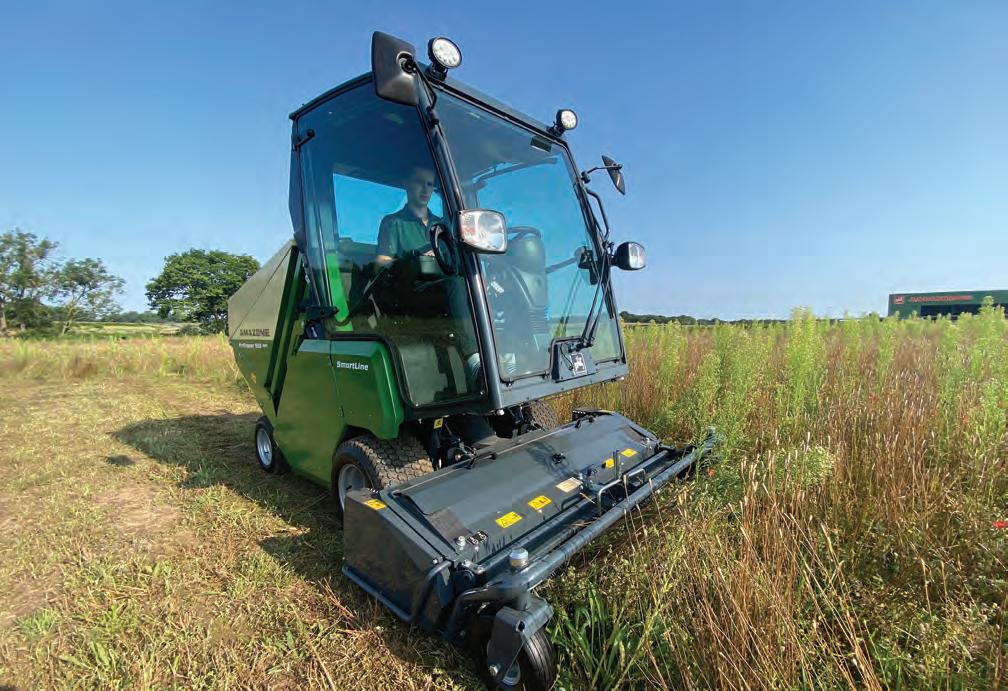



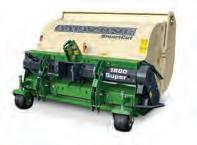
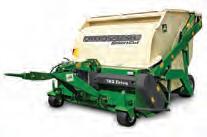
The challenges of recruiting greens staff, despite paying ‘over the odds’, have further strengthened his commitment to automated turfcare, and in April he bought
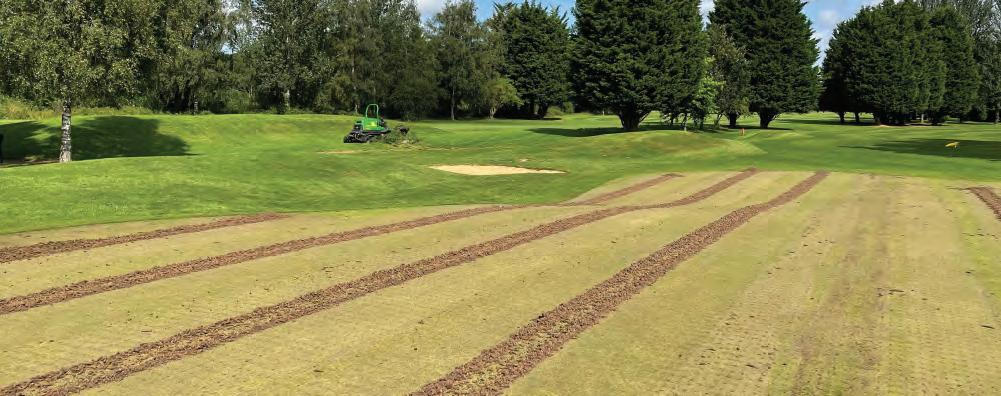






The more rainwater we can collect before it hits the ground the better
“
Husqvarna’a latest innovation, the Ceora. Capable of mowing up to 75,000m2, it is ideal for the location, Jack reports. “The mower cuts the fairways equally well in wet or dry conditions, on a cycle of six hours on course, six hours charging, controlled from an app on a mobile device. The only maintenance so far is fitting a set of new blades every two to three weeks, and that takes just fifteen minutes. If I had the mower running 24/7, I’ve calculated we would
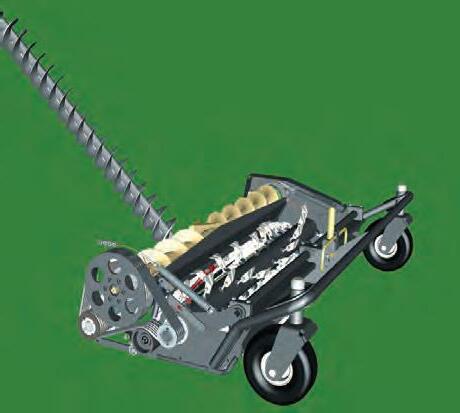
spend £485 a year on power. Although rising energy prices might prompt an adjustment to that figure!”



Planning to buy four more robotic mowers, Jack sees scope for this style of course management. “We want to cut fairways regularly down to 16mm, so that the grass does not regrow as quickly, then the semi rough at 30mm and rough at 60mm,” he says.
The team can leave Ceora to carry on

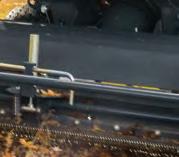

Wet or dry grass, long or short, collect or mulch, the PH 1250 and PH 1500 models take it all in their stride. SmartCut rotor cleanly cut and shred the grass
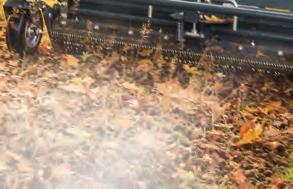
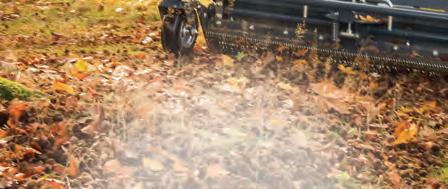

The two augers provide blockagefree collection and maximum compaction
We want to cut fairways regularly down to 16mm, so that the grass does not regrow as quickly, then the semi rough at 30mm and rough at 60mm
while they devote more time to “detailing across the course”, Jack adds, “such as paths upkeep, tee boxes, drainage, plantings and generally enhancing the course for members. These are the jobs best done in the summer, which is just the time when the greens teams have to spend so much time mowing using traditional turf machinery.”

The 20,000 trees on and around The Ridge mean the Ceora cannot reach right under fringe cover, Jack explains, while the mower can operate up to 500m from the GPS base station it continually communicates with. Although currently plugged into the mains, the base station could well be solar powered soon, he
reveals, along with mower charging points, as he plans to introduce panels to cut his electricity bill further.
The course suffers from nutrient depletion because of its free-draining character.


“During February and March, we apply Keiserite on fairways to boost magnesium and iron levels, and feed greens and tee boxes. We only spray on pesticide and weedkiller if we really have to and avoided doing so during the hot, dry spell earlier this year. Fusarium on the greens, probably due to tree overhang, can spring up, but we reduced nitrogen application and haven’t seen it this last year, so it has probably grown out.”
The greens need constant watering to
Club restaurant Adventure golf courseavoid drying out, Jack explains, and the team is introducing ryegrass into the sward. “Bents don’t like wet conditions so we’re sowing hardier grasses now. Ryegrass is also far cheaper. My head greenkeeper, Paul Bardsley, was ridiculed for this move, but we are seeing the benefits. Applying ryegrass twice a year will see the greens converted in five or six years. It’s all about looking at different ways to do things.”
Coring to 5in depth and backfilling with
sand helps keep greens in fine fettle, along with regular overseeding. “Bourne Aggregates deliver 60 tonne loads of Redhill 32 sand and we split that into three tonnes per green,” informs Jack.


Farming has given Jack the capability to handle complex management, but he also recognises he needs specialist input to maintain a golf course. Head greenkeeper
We only spray on pesticide and weedkiller if we really have to and avoided doing so during the hot, dry spell
“
Paul came here from a Derby course and has brought “vast knowledge” to The Ridge, Jack says. “Either Sophie or I meet him every two or three weeks to discuss any issues or agree the coming period’s work.”
Jack took on greenkeeper Danny McDonald nearly a year ago after advertising the post. In his early 20s, he’s keen to complete his Level 2 greenkeeping, which he’ll take at Hadlow College.

Miles Davis, meanwhile, has just
completed his Level 2 at the college and spends most of his days cutting the greens, fairways and rough - “every mower task and uses the tractors too”.
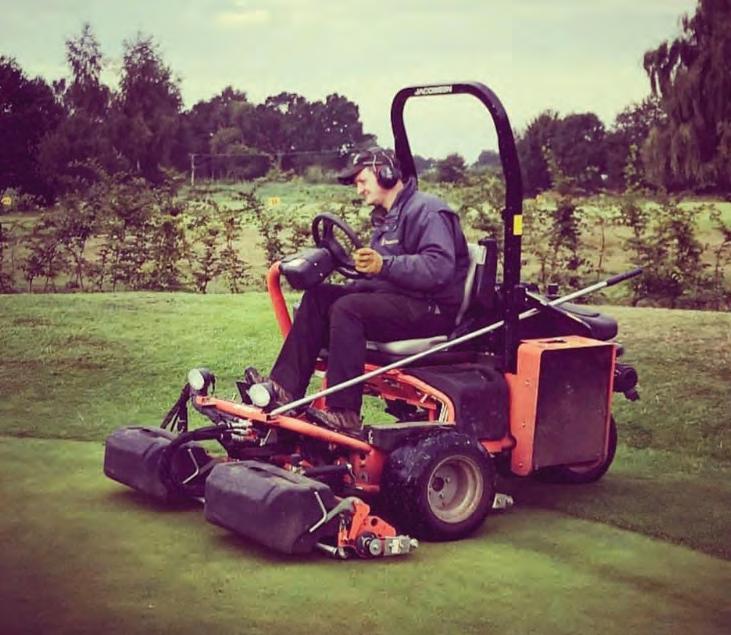
Part-timer Colin Barker comes in two or three times a week to cut the rough and handle the welter of odd jobs around the course.
Jack himself took agriculture at Hadlow so is qualified to boom and knapsack spray (PA1, 2 and 6). He handles vertidraining too, using the Wiedenmann and Iseki compact tractor, with its turf tyres, to core greens from the end of March to early April, then again in August.
The two course ponds cover half to three quarters of an acre and were constructed when the course was built in the early 1990s. They are fed from water collected from the car park and rainwater falling on the clubhouse roof.
“The more rainwater we can collect
Bringing ‘farming mentality to the golf club’, Jack has been quick to adopt turfcare efficiencies
Fusarium on the greens, probably due to tree overhang, can spring up, but we reduced nitrogen application and haven’t seen it this last year
“
before it hits the ground the better, so that we can use it to irrigate the course. We’re improving the existing Hunter system to cope with demands,” added Jack.



Drastic tree work over the last two years has reduced the height of the plentiful poplars from 80 to 20ft, so the team can prune them with hedge cutters annually. “They were not wildlife friendly and were growing 2m a year,” says Jack. “Hedges have been thickened up with blackthorn to attract birds.
Sparrowhawks as well as barn, tawny



and little owls are common. We have fixed owl boxes to lime trees to encourage a sustainable population. The greens team tackle the lower branches so they can mow under them and there is fresh planting of mixed species underway to replace old apple trees with oak, beech, cherry and silver birch. Piles of branches provide hibernation holes.”
Jack’s biggest problem is badgers. “They run amok and breed like rats. Road verges locally are collapsing because of their burrowing. They are no longer
managed - the countryside has to be managed - and hedgehogs, which were common here once are now scarce, probably because badgers are competing for their food source.”



As an early adopter and advocate of robotic mower technology, Jack remains convinced that they are the future. “The technology may not suit every course, but it fits the model of how we want the business to go,” he states, “bearing in mind the chronic shortage of labour and cost factors in the golf sector.”




 Engineered
Engineered
If I had the mower running 24/7, I’ve calculated we would spend £485 a year on power. Although rising energy prices might prompt an adjustment to that figure!
As we swiflty progress through October 2022, the men’s World Cup in Qatar is fast approaching, and activity is increasing for FIFA Senior Pitch Management Manager Alan Ferguson and his team

Years’ worth of planning is coming to the fore in Qatar, but whilst the final preparations are being made, other tournaments in the football calendar are taking place.
The FIFA Women’s U20 World Cup, held in Costa Rica from the 10th August to the 28th August 2022, marked the return of youth tournaments following a three-year absence due to the pandemic.
With the men’s World Cup only months away, this is the final event before FIFA’s showpiece kicks off in Qatar. While football in the desert comes with its own challenges, Alan and his team faced other factors in Costa Rica’s tropical climate.
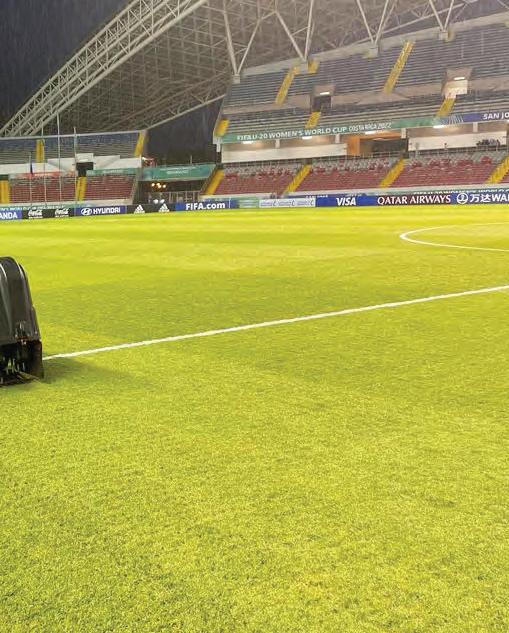
The first major issue for Alan to contend with was the number of countries hosting the tournament, with Panama originally appointed co-hosts.
Alan explains: “Difficulties around the pandemic saw Panama drop out, and the decision was taken to allow Costa Rica to go it alone as a single host.
Fortunately, just before the pandemic struck, the first inspections in Costa Rica to inspect the stadiums and training pitches were made, so we had a base to work from. Although travel to Costa Rica was not possible during the pandemic, some work was able to be carried out locally with virtual, and this allowed some valuable preparatory work to be undertaken, which proved
invaluable when the world opened up again.
The biggest challenge for the team was the timing of the tournament because the August 10th to 28th dates saw the tournament fall in the Costa Rican rainy season.
Those dates weren’t the most ideal for the tournament, but the international calendar is pretty packed and the dates were the best available. You sometimes just have to get on with the hand you are dealt, but I knew from my counterparts in Costa Rica that the rain would impact the tournament at some point.
One of the first bits of research was a detailed look at the last ten years’ rainfall. At first, I thought someone had made a mistake adding an extra zero. Sadly, it proved to
be correct, with 3,500 plus mm falling annually. The majority of this falls in the rainy season, which sees the country regularly hit by tropical storms. Costa Rica has the Caribbean on one side and the Pacific on the other, so it gets hit from both sides.”
The tournament was hosted in two stadiums, with training hosted over nine training sites. Reducing the number of stadiums was done as part of FIFA’s imitative to make tournaments more cost-effective while, at the same time, allowing more participation from member associations.
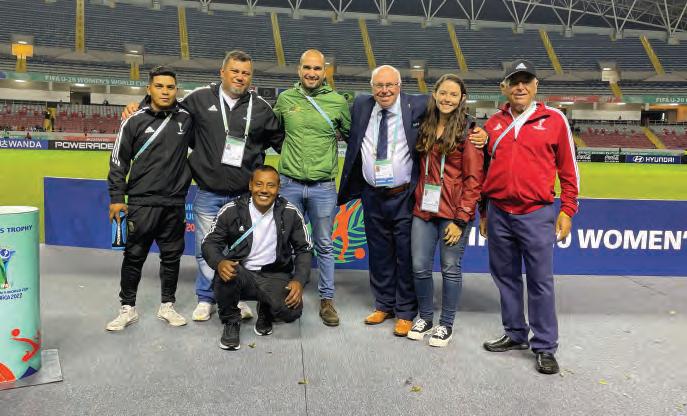
Plans are already in place to expand the men’s tournament to 46 teams starting from 2026, and the women’s Australia and New Zealand tournament will feature 32 teams. Increasing the number of participants is also being looked at for the youth tournaments. To meet the growing number of teams and reduced number of stadiums, Alan is turning
to pitch technology.
“With technologies available, such as pitch stitching and grow lighting, it is now possible to set them up to play multiple matches on one pitch. The Costa Rica tournament featured 32 games, with 18 played in the National Stadium and 14 played in the Morera Soto stadium. By staying in one city, FIFA also eliminated the need for the teams to fly from city to city during the tournament, thus reducing their carbon footprint. Working in this way will help FIFA achieve our aim of making tournaments carbon neutral as part of our green policy by 2030.”

Alan continued, “The tournament match schedule featured double headers during the group phase and the knockout phase. The condensed schedule saw four games per day being played, with two in each stadium. Games in Morera Soto kicked off at 11.00am and 2pm, with games in Estadio
 Costa Rica final
Alan Ferguson (3rd from right) and his team at the Costa Rica final
Morera Soto lightning
Costa Rica final
Alan Ferguson (3rd from right) and his team at the Costa Rica final
Morera Soto lightning
The weather was resembling something like the end of the world. Within the game, there is a protocol for suspension due to severe weather, and within three days, we experienced it three times
Nacional kicking off at 5pm and 8pm. The first matchday was quickly followed by a second match day before a rest day. Match days three and four followed ahead of a second rest day, ahead of the group phase conclusion with match days five and six.”

The youth World Cups allowed the teams to experience top-level international tournament football. As well as hosting the 32 games, both stadiums hosted official training sessions. Each session lasted one
hour and, combined with the matches, saw the National Stadium host 83 hours of use in twenty days while Morera Soto hosted 60.5 hours in twenty days.
Alan says the excellent traction levels resulted in low surface damage, fully justifying the decision to stitch both pitches. The pitches are the first ones to be stitched in Central America and have created quite a bit of interest among the region’s football community.


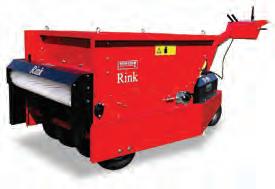


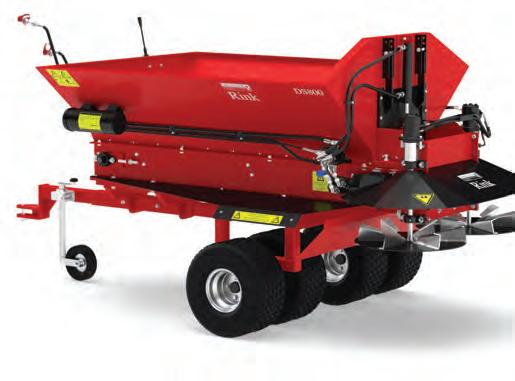
 Morera Soto
Over
Morera Soto
Over
The rye comes into its own in the cooler temperatures of the mid-20s and keeps the pitches look good
“
Having the tournament in the rainy season was always going to impact the match schedule at some point, and on three separate occasions, games were hit by tropical rainstorms.
“Despite coming from Scotland, where rain is a fairly common occurrence, I had never seen rain like this before,” Alan explains. “Within five minutes of the rain starting, the weather was resembling something like the end of the world. Within the game, there is a protocol for suspension due to severe weather, and within three days, we experienced it three times.
The decision to stop the games was a no-brainer because the safety of the players and fans comes first every time. Suspensions in play in this part of the world are not new, and any sport played outdoors has protocols for such situations. We all had the use of a weather app to give alerts when severe weather is imminent. When the game is stopped, a pre-set protocol kicks in.
The first suspension in play is 15 minutes. If the suspension has to continue, another 15-minute period is added.
This can go on up to an hour, at which point a decision has to be made as to whether the game has to be abandoned and re-scheduled. We knew there was a big chance that the heavy rains could impact a game at some point. Part of the pre-match maintenance was to ensure that the pitches were well aerated. Our theory was that if we could open the pitches up ahead of the game, and the rain started, we had a chance to keep the game going. What I didn’t take into account was the intensity of a tropical storm. I have seen rain during a game but never with the intensity that hit the three games in Costa Rica. After barely five minutes, the play had to be stopped as beyond the rain, the lightning was a real risk to life.


Once the rain eased, what was impressive was the speed that the water drained away
 Koro Field Top Maker
National Stadium
Koro Field Top Maker
National Stadium
With technologies available, such as pitch stitching and grow lighting, it is now possible to set them up to play multiple matches on one pitch
into the aeration holes, and play resumed on each occasion within the allocated time.”

Away from the matchday conditions, the training sites took centre stage during the build-up. The tournament originally had ten training pitches selected in six venues. Two of the venues, the National Football Center and the training centre of local club Deportivo Alajuelense, would provide six of the pitches.
Restricting the tournament to one city also
reduces the number of available training venues, and working in this way isn’t without its challenges for the pitch team.

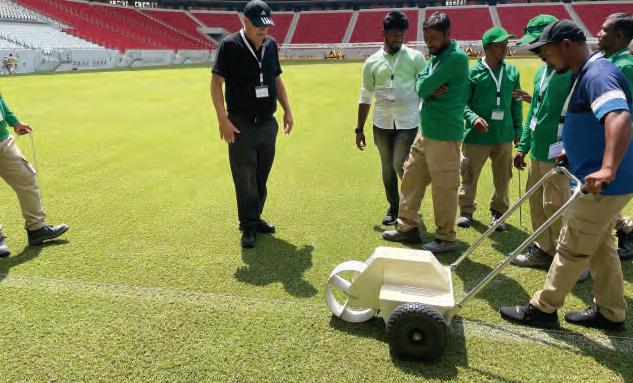
“We knew two of the sites were struggling to get over the line and knew we needed one of them to make it to give us enough training options to get through the group phase,” Alan said.
“Once we are in the knockout stage, we were in a good place as half of the sixteen teams would be eliminated. The hardest
part of any tournament delivery is the final week build-up and the group phase. With the tournament all in San Jose and the immediate surrounding area, there was not such a wide choice of venues.
Beyond the two multiple pitch sites, we used one local school pitch (Lincoln School), one community pitch (San Rafael) and a second division club stadium pitch (Piedade). The other pitch offered to us in Cartago did not come up to scratch with some issues to
Line marking in QatarOnce the hybrid swards were cleaned in traditional fashion with the Koro Field Top Maker, the rye was sown into the pitch tops
“
player safety over micro levels. This meant that nine of the ten offered went into the competition.
Training sites are always the bigger challenge for any football tournament organiser, and FIFA is no different. The sites are never all straightforward, with many organisers looking to use the tournament to boost football facilities in the host countries. I have no issue with that, but sometimes the sites offered present just too much of a challenge.
Like everyone else, we have a budget, and following the first inspection, each of the selected sites is risk rated on a scale of one to five, with one being a complete fail and probably requiring significant funding to bring up to standard. I like to take on training sites that are two or better. Two needs work but can be acceptable, while a three meets minimum international standards. But it’s not just the pitch that has to tick all the boxes, although that is one of the key boxes.
The training site has to be close to the
team hotels, and the onsite facilities are also risk-rated by the FIFA training site team. The training site team looks after the dressing rooms and other facilities, such as the medical room and media facilities, while the pitch team looks after the pitch.


It really is a team effort to get the training sites up to scratch. It sometimes happens that either the pitch is good and the changing facilities are bad, or vice versa. For a youth tournament such as the women’s U20, the teams rotate through the sites, so every team has the same experience. No one is disadvantaged or gets an advantage over any other team. In Costa Rica, we gave the training sites back in significantly better condition than we took them on, and this gives us great satisfaction that we have left a legacy for football in that country.”
After twenty hectic days, 31 games, and 207 training sessions, the final game arrived. For Alan, this is where the whole team’s efforts come to a conclusion. The FIFA U20 Women’s World Cup was a success for all
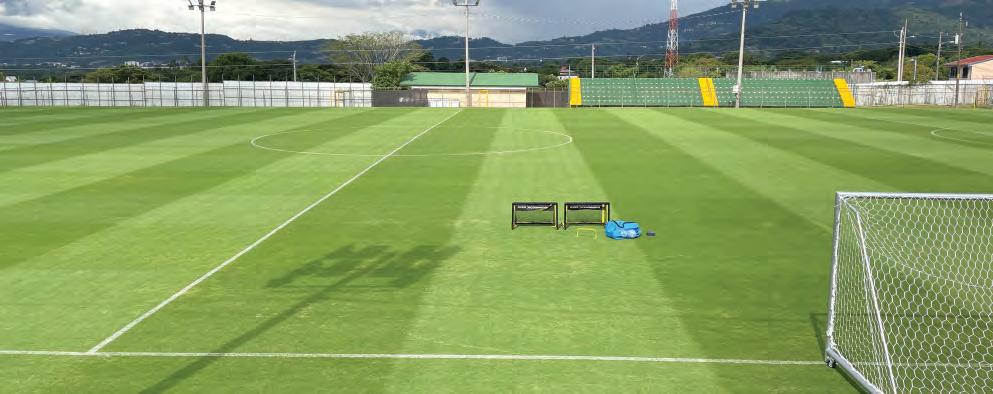 The Piedades Stadium days before the tournament
H-Vac system
The Piedades Stadium during the 2020 inspection
The Piedades Stadium days before the tournament
H-Vac system
The Piedades Stadium during the 2020 inspection
The pitches are the first ones to be stitched in Central America and have created quite a bit of interest among the region’s football community
concerned and a very welcome return to tournament football.
With Costa Rica behind them, it’s on to Qatar for Alan. By the time this article is published, the 2022 World Cup, a project that started over 10 years ago, will be only days away.
Days after returning from Costa Rica, Alan was back at Heathrow and
heading out to Doha for the September inspection. This inspection would take in all 74 pitches (8 stadiums and 33 training sites, with two pitches per training site), plus the delivery of the second major pitch management workshop.

Alan explained, if someone had offered him the pitches at this stage of preparation in the conditions they are in now, he would have grabbed them with both hands.
“The October inspection was focused on
the renovations that introduced the ryegrass to the stadium pitches and to the primary training pitches,” Alan explained.
“In all eight stadiums, the environment is being artificially controlled above and below the ground by a combination of the stadium H-Vac system and the vacuum and ventilation system under the ground.

The unique combination holds the average air temperature between 23 °C and 24 °C in all eight stadiums, which is ideal for
 Grinding clinic
Grinding clinic
ryegrass. The root zone temperatures are held just slightly above this with the vacuum and ventilation system. The ryegrass is introduced to the Paspalum to boost the pitch presentation in the Arab winter. Paspalum is happy in temperatures reaching 30 °C and beyond.”
This is all well and good coming out of the renovation period, but the issue for the team is that in the World Cup time, the Arab winter begins. Temperatures can fall quickly back into the mid to high 20 °C, which is pleasant enough for most, but for the Paspalum, it can result in yellowing off
As Alan explained: “To protect the overall aesthetic of the pitches, the rye comes into its own in the cooler temperatures of the mid-20s and keeps the pitches look good. The only way the team could guarantee green pitches and good coverage through the whole tournament was to go through
what is referred to as the transition period. Once the hybrid swards were cleaned in traditional fashion with the Koro Field Top Maker, the rye was sown into the pitch tops.”
Alan will return to Doha in mid-October to inspect the result of the grow-in, and begin the final preparations for the tournament.
A huge part of the successful works to date is put down to the Workshop programme. Two major pitch management workshops have been delivered over four days in two of the stadiums hosting the finals.

They took place in 2021 in Al Bayt, with the second being delivered during the inspection in Al Thumama. All 611 groundskeepers and their managers have benefitted from the educational days put on by FIFA, with some of the top names in the grounds industry delivering four fantastic training days.
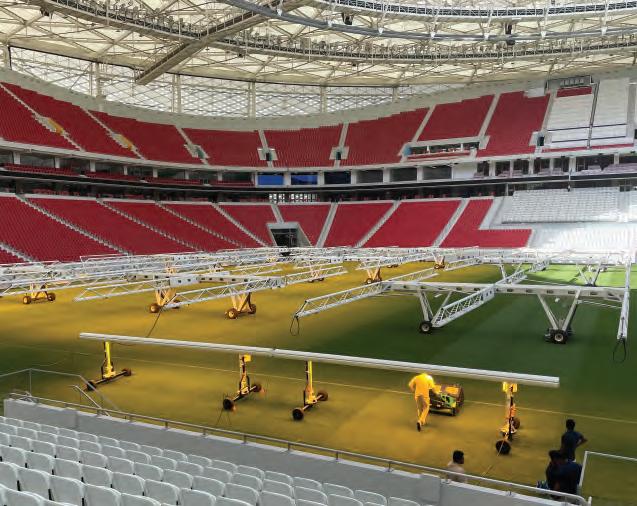
These workshops ensure mechanics, irrigation engineers, spray operators and machine operators all have the best understanding of the state-of-the-art range of equipment at their disposal.
Ultimately for Alan and the pitch team, the 2022 World Cup will bring four years of work and training to a conclusion. As it would be for anyone, this is a special moment in Alan’s career because when Qatar and Ecuador kick off the opening game on 20th November, his first men’s tournament in charge begins.
 Opening ceremony rehearsal
Al Thumama
Opening ceremony rehearsal
Al Thumama
In all eight stadiums, the environment is being artificially controlled above and below the ground. The unique combination holds the average air temperature between 23















All eyes were on Birmingham this summer, as the XXII Commonwealth Games took over the second city. The legacy of the Games isn’t only evident through investment in international sporting venues, but in grassroots clubs tooand Moseley Cricket Club is a prime example

Lying in leafy Solihull, just five miles from Edgbaston’s hallowed turf, Moseley Cricket Club is one of Birmingham’s oldest. Founded in 1855, it is among the founding members of Birmingham and District Cricket League - the oldest in the world - in which it is still active.

But this is a historic club with its sights set firmly on the future. So when, in 2018, the England & Wales Cricket Board (ECB) approached the club about its pictureperfect ground becoming an Official Training Partner for the forthcoming Commonwealth Games, the opportunity was welcomed by a forward-thinking committee, with Head Groundsman Peter Day and Chairman Malcolm Eustace heading up the project.

From the ECB’s perspective, Mosely CC was not only ideally placed as a training ground for the Commonwealth Games but was a strong candidate for its substantial investment in women’s and girl’s cricket.
The long-term aim was to provide a highclass training venue for women cricketers at Moseley CC, in Warwickshire and across the West Midlands through a project supported by Warwickshire Cricket and Central Sparks women’s regional cricket team. Dr Iain James, Head of Facilities Services at the ECB, explained:
“The ECB wanted a venue that could be a training venue for the Commonwealth Games but also provide a legacy of great facilities for women’s and girls’ cricket in the

We are beyond delighted with the new facilities - not many clubs have facilities of this standard so, in addition to the honour of hosting some of the finest international players in the women’s game, we now have a sound foundation to build on for the future
“Head Groundsman Peter Day
region, long after the Games have finished. To help deliver a successful training venue, we funded improvement in facilities through our ‘ECB Transforming Women’s and Girls Cricket’ grant fund.”
With funding secured, the ECB Facilities Team oversaw the drawing up of plans to bring the club’s facilities up to the required standard - including the installation of new hybrid pitches, upgrading the club’s existing non-turf practice nets and the creation of a new, natural turf practice facility. However, no-one could have predicted the impact of the forthcoming COVID-19 pandemic and,

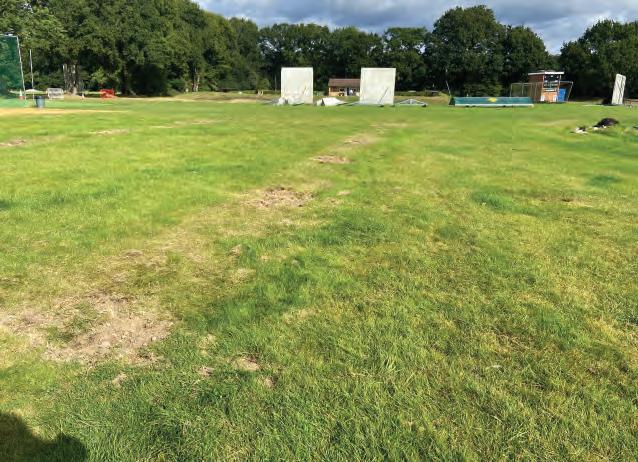
with international sporting events on hold for almost two years, the question over whether the Games would be able to go ahead loomed large.
Following the success of the 2021 Tokyo Summer Olympics and further easing of restrictions, work began in earnest on the project in autumn 2021, at the end of the cricket season. Six SISGrass hybrid wickets were installed on the square by SIS Pitches, and cricket pitch specialist total-play Ltd was approached in early September to provide a design-and-build solution for the new natural turf practice nets facility, as the
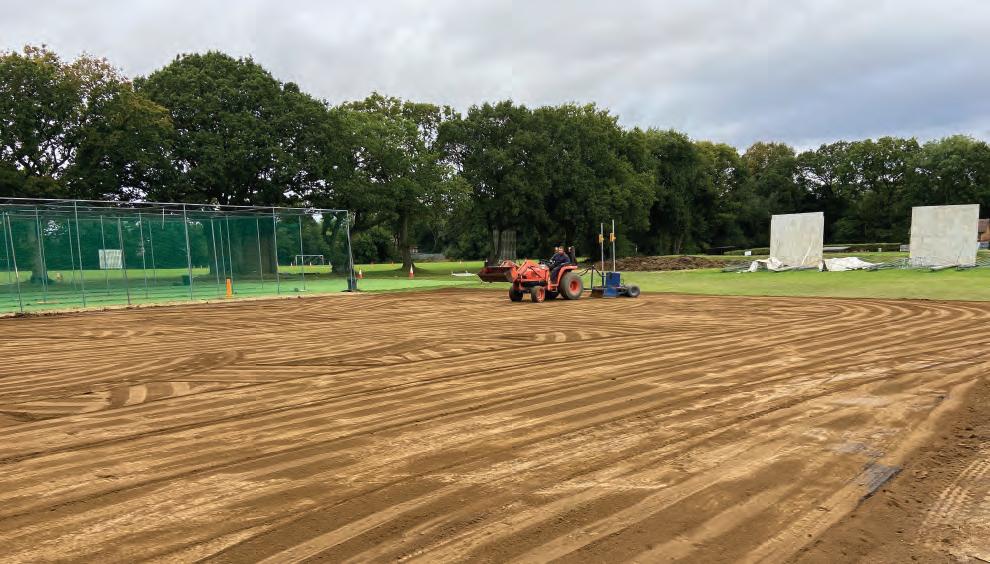 ‘Profile Construction’ works commenced in October 2021 to create a new natural playing surface for the new training facility
‘Profile Construction’ works commenced in October 2021 to create a new natural playing surface for the new training facility
worked closely with Birmingham 2022, Moseley CC, and our delivery partners throughout the project
international players would need to practice on grass rather than a synthetic surface.
To meet the brief from the ECB Facilities Team, total-play MD David Bates drew on his years of experience as a first-class groundsman to propose a retractable netting solution that could be fitted over a prepared area of turf; creating a facility that could be easily maintained and of use not
only for the duration of the games but by the club in future. However, with less than a year to transform a regular turfed area into a high-performance natural turf cricket surface, time was of the essence.

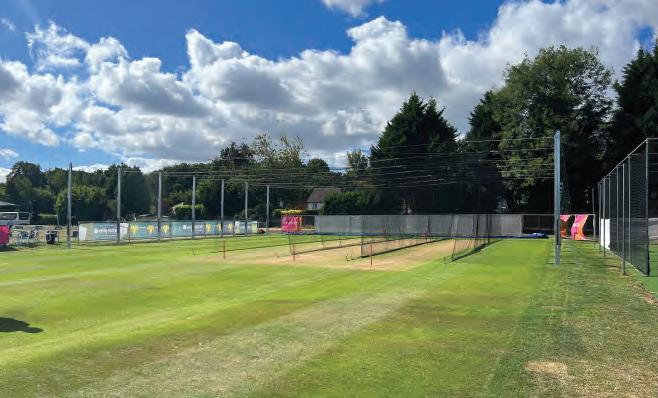
Work started on the natural turf area in the second week of October 2021, using the process of Profile Construction; creating a new playing surface using imported loam directly on the existing soil base - less deep than the construction of a new table, but a
better solution given the time constraints at play. With surface construction underway, David’s attention turned to the design of the netting system that would enable the nets to be retracted when not in use as a practice facility - offering a space saving and flexible solution, now christened ‘Pro Netting’.
A rigorous maintenance schedule was prescribed for the newly constructed playing surface, which was followed through to May when the new netting system and
The new ‘Pro Netting’ natural turf practice facility designed and installed by total-play LtdWith significant investment in its surfaces, the club’s need for robust ground protection systems both on its square and new natural turf practice facility was apparent
“
perimeter barrier were installed to ensure it would be play-ready by summer.
Elsewhere, total-play’s non-turf expertise was drawn on to replace an ageing artificial match pitch on the club’s second ground, with a new ECB approved match pitch built to the flagship tp365 system design - and to refurbish the club’s existing practice nets facility; stripping the system back and replacing shock pads, carpets and netting. David also worked in a consultancy capacity alongside contractor DW Shotton to resolve historic flooding issues on the ground by amending the irrigation system to the new
natural practice area and installing new perimeter drainage.
With significant investment in its surfaces, the club’s need for robust ground protection systems both on its square and new natural turf practice facility was apparent - and again total-play presented the solution.


For the main square, David worked with the club to prescribe a bespoke covering system made up of several individual covers - including its Climate Cover System and several Rain Cover Flat Sheets, offering different benefits to individual areas, to protect the entire square and provide all the protection the club would need in a game situation.
Over on the new natural practice facility, another bespoke covering system was designed - this time a Climate Cover System with integrated inflation tube for quick and easy deployment across the whole area, and a neat storage system to the side of the facility ensuring the cover is always in place ready to deploy. This meant that, whatever the great British summer threw our way, the international teams would be able to
To help deliver a successful training venue, we funded improvement in facilities through our ‘ECB Transforming Women’s and Girls Cricket’ grant fund
The ECB wanted a venue that could be a training venue for the Commonwealth Games but also provide a legacy of great facilities for women’s and girls’ cricket in the region
practise on a dry natural surface as soon as any inclement weather passed.




With project works completed by early summer and the new facilities ready for use, cricketers from the international Commonwealth teams arrived in July and trained intensively at the ground for the twoweek duration of the competition. For the first time in Commonwealth Games history, it was short format Women’s cricket that
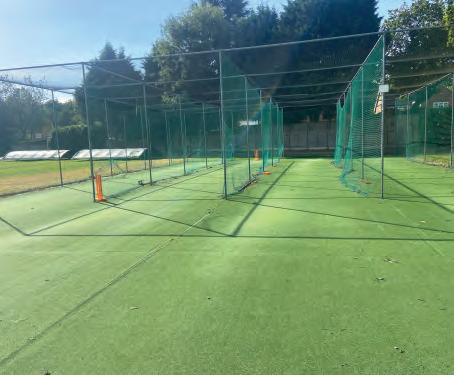
took centre stage with Australia, Barbados, India, Pakistan, England, New Zealand, South Africa and Sri Lanka all represented.
With the new facilities having been thoroughly tested by some of the world’s best players over the course of the games, the club is now looking forward to a bright future boasting some of the finest infrastructure of any grassroots club. The prevalence of Women’s cricket at the Games was especially poignant as one of Moseley’s key aims for the future is to grow
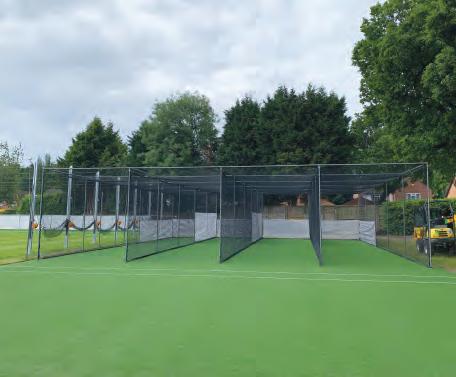



Aluminium construction.
Solid Ferrule preventing distortion of the tube end. Features the BMS unique design, double plug at the handle end.
Replaceable end sections available 2.5m.
 The club’s existing artificial practice nets facility before refurbishment
The non-turf practice facility following refurbishment works
The club’s existing artificial practice nets facility before refurbishment
The non-turf practice facility following refurbishment works
It is hoped that their presence will help inspire more women to join the club
“
its Women’s Cricketing presence - attracting and retaining female members alongside its strong youth and male contingent, in-line with the ECB’s legacy plans.
Leading West Midlands women’s cricket side, Central Sparks, now use the club as a training base and it is hoped that their presence, alongside an energetic recruitment campaign, will help inspire more women to join the club and enjoy this fast-growing element of the sport. Dr Iain James said: “We worked closely with Birmingham 2022, Moseley CC, and our delivery partners throughout the project to help make T20 cricket at the 2022 Commonwealth Games a success. We
look forward to working with Moseley CC, Warwickshire Cricket and the Central Sparks to build on that legacy going forward.”

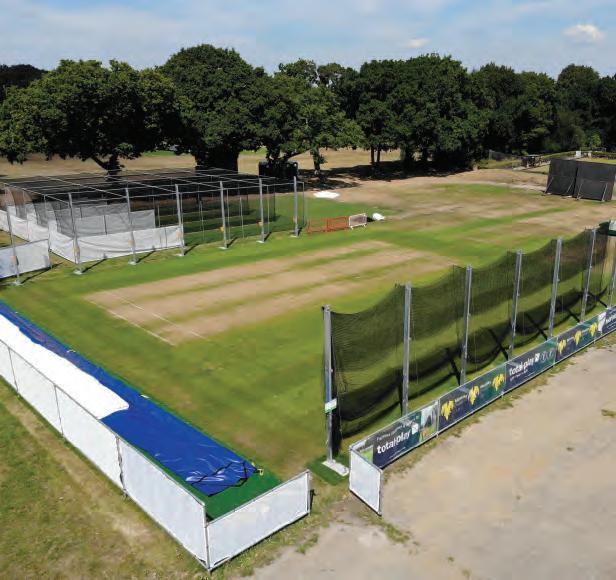

The future is certainly looking bright from the club’s perspective, too - Club Chairman, Malcolm Eustace, commented: “We are beyond delighted with the new facilities - not many clubs have facilities of this standard so, in addition to the honour of hosting some of the finest international players in the women’s game, we now have a sound foundation to build on for the future. We’d like to say a huge thanks to everyone involved in the project - thanks to the ECB - especially Iain James and Andy McKay - to SIS, TGMS, Shottons - and to David Bates and the team at total-play.”
 An aeriel view of the new natural turf training facility with nets retracted, and the refurbished non turf practice nets in the background
An aeriel view of the new natural turf training facility with nets retracted, and the refurbished non turf practice nets in the background
Whatever the great British summer threw our way, the international teams would be able to practise on a dry natural surface
“

Join the best at SALTEX 2022 and hear directly from industry leaders, technical specialists, and experts from across the industry.



Sustainability and environmental issues will star in the Learning LIVE sessions, with leading speakers from throughout the industry booked to appear. Learning LIVE provides support, insight, and real solutions to key industry issues delivered by an impressive lineup of expert speakers. With over 30 sessions attacking key issues for the grounds care industry including pay, career development, how to negotiate in the workplace and funding available from sports clubs – there is a session for everyone.
And this is all alongside the opportunity to network with industry colleagues and make new connections while viewing the very latest from over 400 brands, showcasing products in three halls across two days at the centrally located venue – Birmingham NEC.
Join the best and register now for Europe’s largest FREE sports turf, amenities and landscaping trade exhibition. Visit saltex.org.uk and register now for your FREE ticket. Get involved!
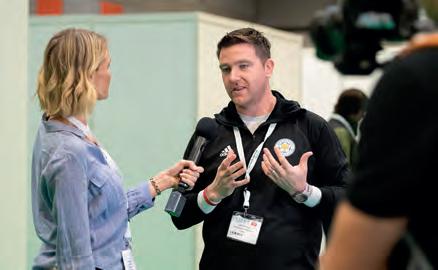
A stunning dawn breaks over Victoria Park as greenkeepers attend to presentation for the flat green bowls at the Commonwealth Games. This image was taken by deputy head greenkeeper Tim Rouse, clearly a man of many talents!
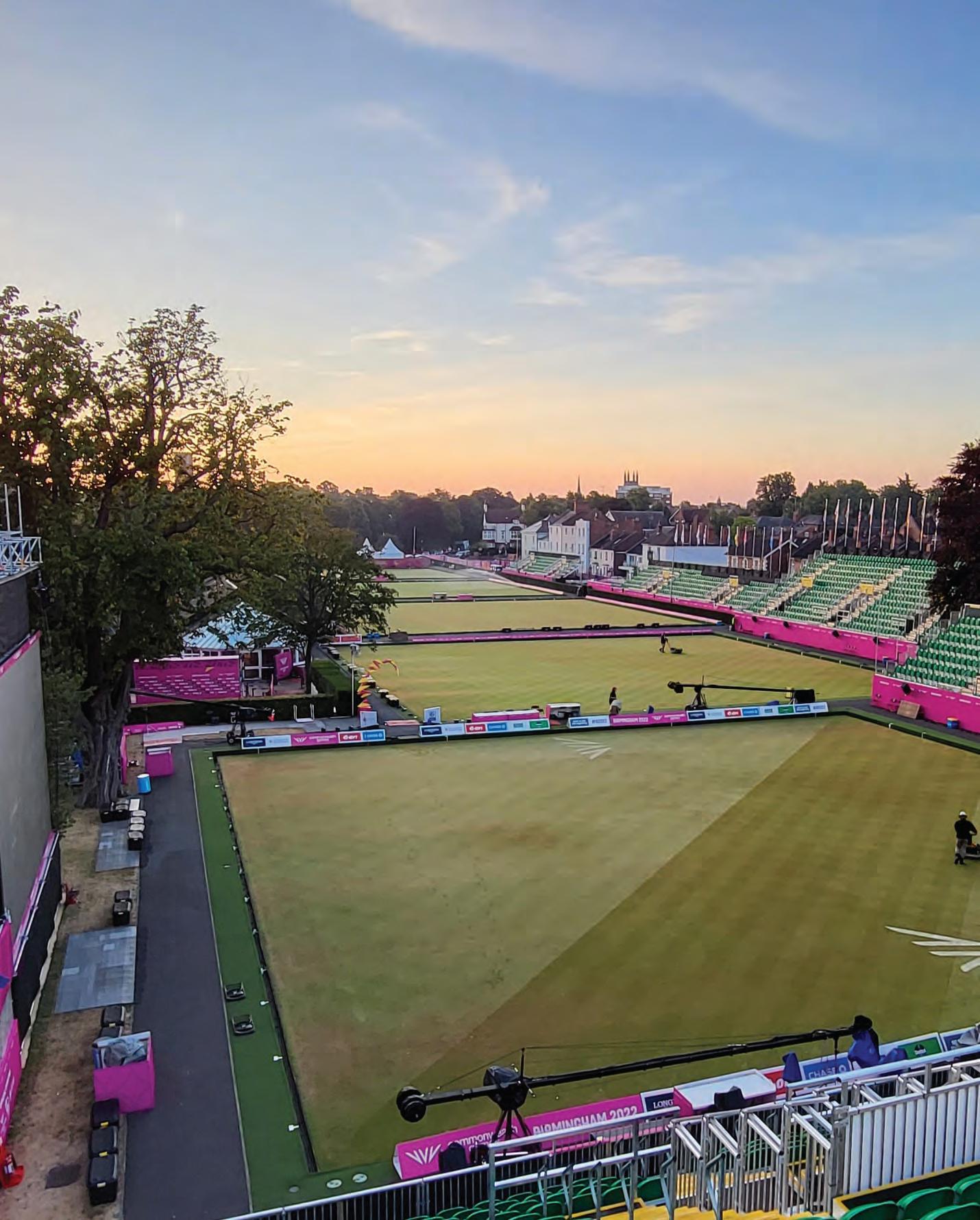
Picture this... you and your team have just prepared greens for a global, televised event and you’ve now got less than three weeks to turn them around for the National Championships. Oh, and in between, the club members that also patronise the greens would quite like to play on them!
This is the challenge that faced Warwick District Council and the idverde Warwick sports maintenance team, headed up by Mike Finch, who delivered the flat green bowls and para bowls surfaces for the Birmingham Commonwealth Games, closely followed by the National Bowls Championships at Victoria Park, Leamington Spa. Jane Carley reports
It was all achieved with a mixture of meticulous planning, strong teamwork and positive co-operation between greenkeepers, Warwick District Council, turf consultants STRI and the CWG organising committee, according to Mike.

“The contract to renovate the greens went out to tender, and the Sports Construction Division of idverde, led by Steve Tingley, secured the bid. This is probably one of the great benefits of working at idverde, as we have the experience and staff to offer a one stop shop of construction, grow-in and ongoing maintenance to local authorities and sports clubs,” he added.
“Work began as soon as the announcement of Birmingham’s successful bid was made in 2018, with planning
Top: Close liaison between the idverde Warwick sports team, led by head greenkeeper Mike Finch (right) and Warwick District Council, represented here by green space development officer Simon Richardson, was key in planning preparation for the Commonwealth Games and National Bowls Championship
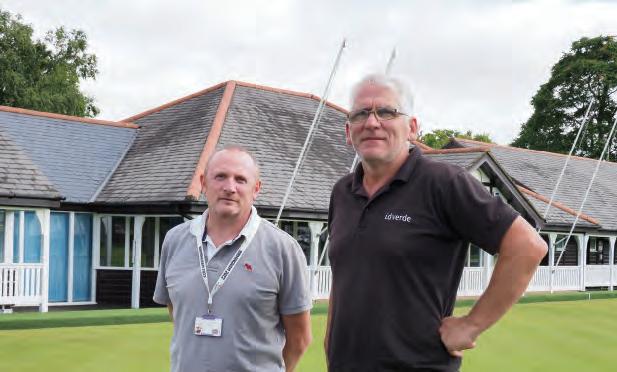
Above: Home to Bowls England, Leamington Spa is no stranger to world class events, which provide a significant uplift for local businesses

Right: A long term programme of cultural work has seen poa replaced with fescue and bent in an 80:20 ratio

consultations ahead of renovations in 2019,” he recalls. “In autumn 2020, greens A, B and C were renovated, regraded and levelled, but it has taken continuous work since then as there was a very small degree of settlement.”
The pandemic slowed construction work as idverde teams heading up from London were unable to travel together, but for the Leamington team it was largely business as usual, explains Warwick District Council Green Space Development Officer, Simon Richardson:
“As long as the greenkeepers could socially distance, we were able to carry on; in fact, we were able to strip A, B and C greens earlier than originally planned as they weren’t being played on. And having seen the issues from the very wet winter of 201920, we got the seed on earlier.”
“In March 2020, we used a levelling bar, then top dressed and micro tined regularly until August. We ended up working by hand as it’s easier to adjust to any settlement.”
With five greens in total to prepare, this adds up to some 7500sqm…
Simon points out that as the greens were effectively new, natural settlement meant
more work to get them completely even.
Mike explains: “Most greens take two or three years to mature. By the time of the 2021 National Championships, the new greens were just eleven months old and it was their first big trial event. However, Bowls England found no negatives throughout the tournament.”
“It takes time to get the root systems established; we’ve now got 80-110mm of root growth. Nutrition is key and we’ve used a weekly feeding programme. We’ve stuck to our programme but had regular site meetings with the organising committee and used all our skills to get the perfection they required.”
Monitoring has played an important part, he confirms: “We soil sampled regularly and used percolation tests to check how well all they key elements were coming together.”
Levels also received continual attention.
“The only way to get results is to constantly check imperfections and correct them by hand. We were topdressing every ten days in the run up to the 2021 Nationals, using a 3m straight edge with two men on the bars, one loading and one adjusting. We’ll do this again in October.” Simon adds: “It’s useful to
Although it’s been hard work, it’s been such an exciting year for the team. They now have experience of being part of a high-profile event
have laser levelling, but you can’t discount the value of levelling by hand.”

Pest control is an ongoing concern, with bowls not considered for the EAMU on Acelypryn to control chafer grubs. “Now Merit (imidacloprid) is no longer available, we have few options - pheromone traps are not very practical,” says Mike. “This year hasn’t been too bad, but we’ll see what next season brings.”
A longer term programme of cultural work

has seen poa replaced with fescue and bent in an 80:20 ratio. “The site favours fine leaved grasses,” comments Simon, “It’s very open to the wind with little tree cover.”
Mike studied grass mixtures at Irish golf clubs before embarking on fescue conversion and he says: “Getting rid of poa made nutrition and watering easier, which cut costs, and the fescues produced a good fast surface. By 2021, we’d gone to fescue greens with some bents which withstand
Battery mowers have been in use at Victoria Park since 2013 and part of the idverde contract since 2021 as part of the local authority’s carbon plans

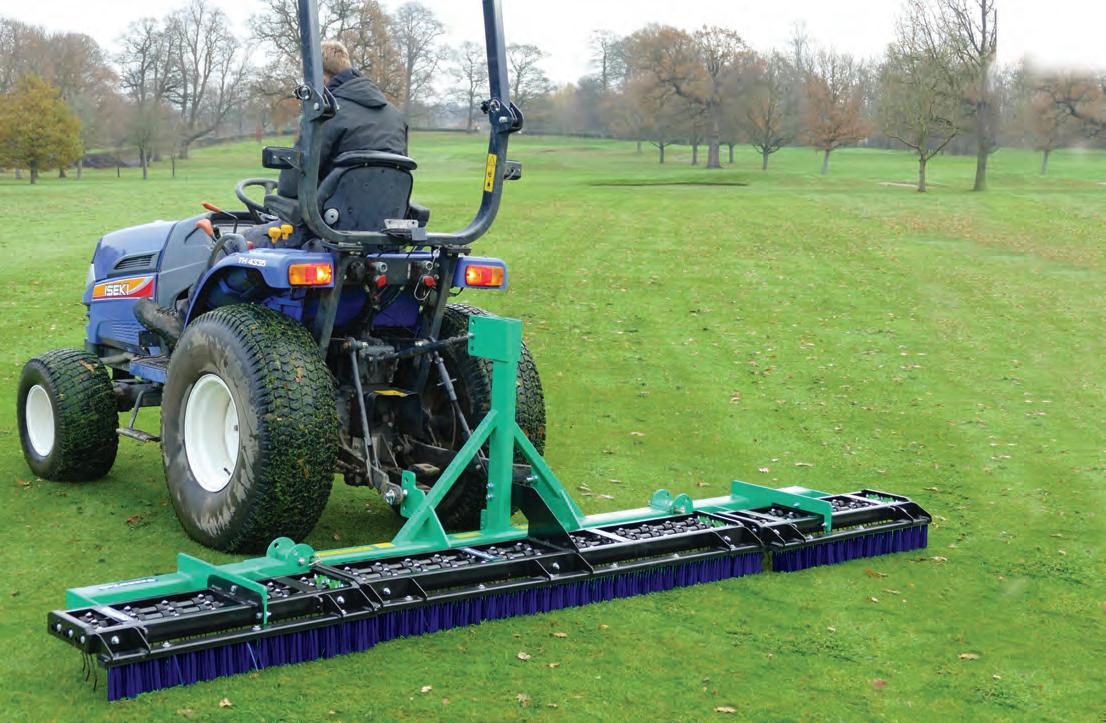
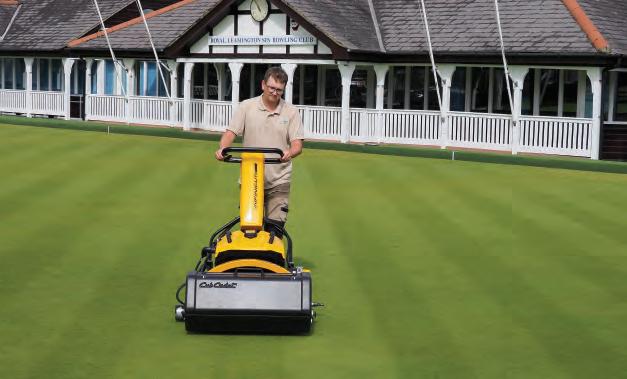
the winter temperatures well; you just need some bents to act as the ‘scaffolding’ in the construction phase.”
The sand in the construction meant that the surfaces were very firm and, along with two cool springs, a couple of overseeds during renovations and a couple more based on Mike’s observations of grass cover were needed.
From September 2021, the team worked seven days a week to get the greens to the
Using electric mowers fulfils two requirements. As well as the environmental aspect, we have our neighbours in residential streets to consider
“
standard they required. “We were aiming for continual improvement. By this time green D was three years old and was really good, however the three new ones had also performed well,” says Mike.
Final preparations included working with England bowlers to run bowls on the greens and see how they performed. “We needed to ensure that the colours (rinks) on each green ran equal,” explains Mike, “and if one was slightly out, we levelled it up. Given the standard of the competition at the Games and the constant TV coverage, there was no margin for error.”
From early May this year, the demand for international teams to train on the greens added to the workload. “We understood that they needed to train, but we also had to balance this with giving Leamington Bowls Club time on the greens, and with maintenance. There were then just five


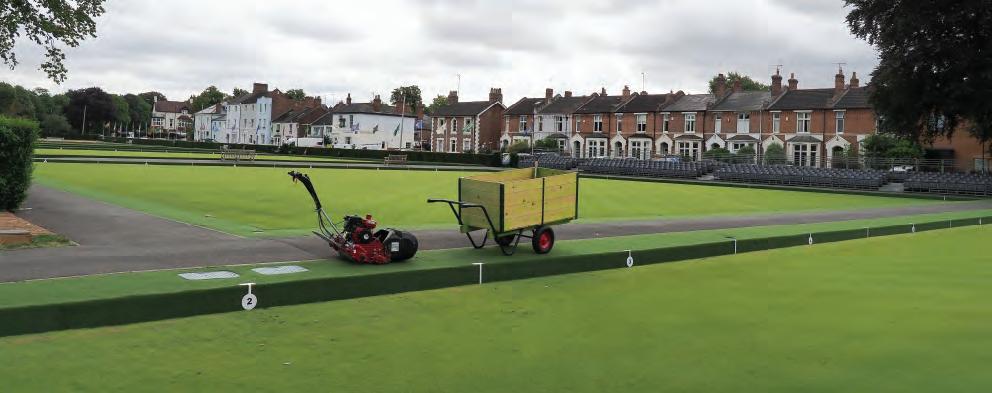
days break at the end of this period to present the greens before official practice began on July 21st.”
Mowing is naturally a major element of this, and with Warwick District Council committed to being carbon neutral by 2025, the Victoria Park team has been working with electric mowers for several years. “Using electric mowers fulfils two requirements,” explains Mike. “As well as the environmental aspect, we have our neighbours in residential streets to consider. For the actual competition, we came to an agreement that we could start mowing at 5.30am by using the Infinicuts.”
The battery cylinder mowers were first trialled on the greens in 2013, and have been in the idverde contract since 2021. “It’s a developing technology and our goal is to match the reliability and consistent cut of our Baroness petrol mowers,” he comments. “On the latest versions, settings can be adjusted via an Android phone which is a useful development. We continue to watch the market as it progresses.”
The mowers were another plus for the
Petrol still has a place, with the Baroness mowers providing the benchmark for battery equipment standards In addition to renovation of four of the five greens, the Pavilion has been upgraded and infrastructure in the wider park improved, leaving a legacy for future events and for Leamington Bowls ClubIt takes time to get the root systems established; we’ve now got 80-110mm of root growth. Nutrition is key and we’ve used a weekly feeding programme
“
‘green’ profile of the Games, where electric power was supplied by solar panels. “We were also provided with battery gulley suckers and blowers by Makita which were very good, so it’s of wider interest too.”



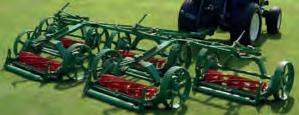
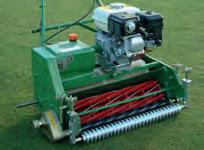
Although the last international tournament at Victoria Park was the Ladies World Championship in 2004, Mike and his team are no strangers to pressure. With Leamington Spa as the headquarters of Bowls England, the National Championships,
which take place over 19 days, this puts the greens firmly in the spotlight. At the Commonwealth Games, competition was packed into eight days.
The build-up to the games has seen considerable investment by Warwick District Council, notes Simon. “We’ve been able to channel funding to Victoria Park. We knew the greens needed renovating and having the Commonwealth Games ensured that it happened. It’s now a matter of looking to
Set in Leamington Spa’s Victoria Park, the bowling greens are very much part of the town’s amenity offering as well as being an international sports venue, and the two roles have to be balanced
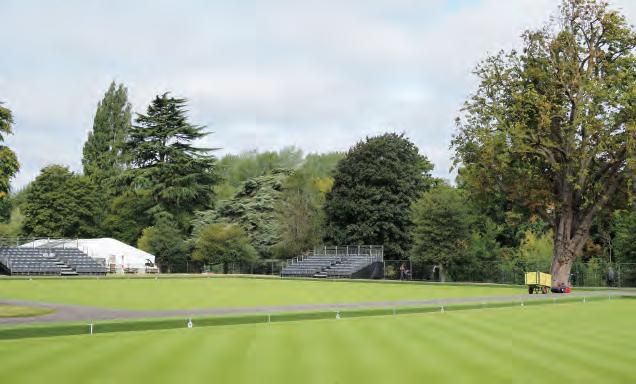

the legacy; we’ve got four new greens and they need to be maintained to the highest standards as there’s the potential to host other international events in the future.”
He acknowledges that international aspirations have to be balanced with the amenity role of Victoria Park. “We do need to communicate this legacy; we have a local club playing at an international standard venue and we want the members to benefit too.”
JUPITER ATI, AMAZON, JUPITER, JUNO, ORION
Each day, we would have four mowers going, and then two staff would be rolling while the other two took on other maintenance and presentation jobs
“
Mike comments that it was always his ambition to achieve international standard greens from joining the previous contractor in 2009. “From 2011, we began to look at how we could address the standards and from 2016 I saw it was possible.”
Investment was also made in personnel - in addition to the bowling greens, the idverde sports facilities team look after 43 football pitches and 20 hard tennis courts for Warwick District Council. To support the full-time squad of Mike, deputy Tim Rouse, Darren Povey and Connor Parry-Hall, Colin Shipman and Chris Charlesworth were brought in from idverde’s Leicester contract.

“Each day, we would have four mowers going, and then two staff would be rolling while the other two took on other maintenance and presentation jobs. Working hours were from 4.30am to 8.30pm, although I was here till ten o’clock one night,” Mike says.
Close liaison with the CWG organising committee ensured that their standards were met.
“It’s similar to how we would normally
work, but more detailed,” he comments. “The colour of the greens had to meet Commonwealth requirements, and we altered the direction of play to suit the TV cameras.”
With the eyes of the world on Leamington Spa through the television screen, ensuring no wear was visible was also vital.“Presentation was very important; all of the work was carried out between 4.30am and 8.30am, and we had to keep the surface even and with some moisture in it. More watering than usual was required due to the high temperatures. I think we had one day of rain - we’re not used to that, as it usually rains throughout the National Championships!”
The Commonwealth Games matches finished on 7th August, and the club players were back on the greens on 12th August. “There was only time for aeration and to irrigate,” confirms Simon. “It’s fantastic how well they have recovered. Within four or five days, all sign of wear had gone.”
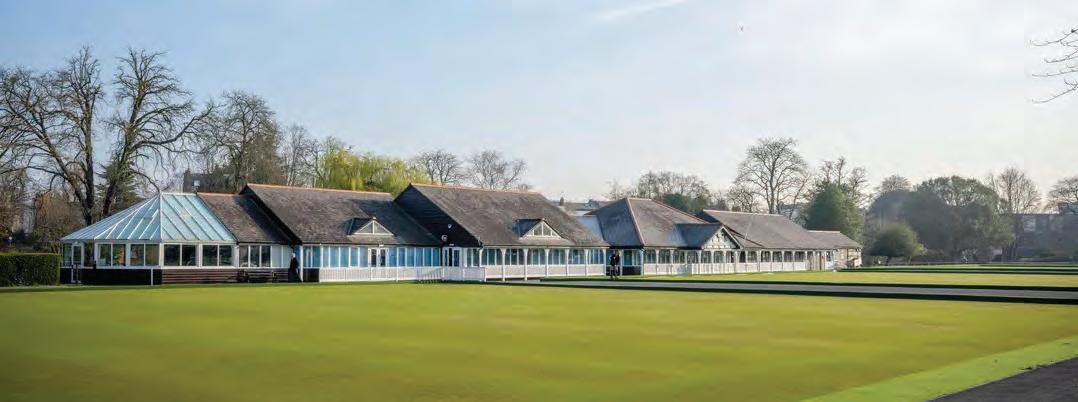
It’s a testament to the standard of the greens that there was no lasting impact
on them from the Commonwealth Games, making the final preparations for the National Championships, which began on 25th August, much easier.
An air of calm presided over Victoria Park when Pitchcare visited just two days before the start of the Championships. Gone were the striking Commonwealth Games banners, ticket booths and tall grandstands that had transformed the venue a couple of weeks earlier. A new Bowls England Chief Executive has masterminded a higher profile for the Nationals, however with slightly more modest grandstands replacing the folding chairs spectators used to haul from their cars, and hospitality facilities being put into place.
Thoughts move on then to renovation - which should be a quicker job this yearand then to some much needed holidays. “Although it’s been hard work, it’s been such an exciting year for the team,” comments Mike. “They now have experience of being part of a high-profile event, and even when we return to normal, that will stand them in good stead for the future.”
The only way to get results is to constantly check imperfections and correct them by hand. It’s useful to have laser levelling, but you can’t discount the value of levelling by hand














The opportunity for UK racegoers to attend a Breeders Cup-style race meeting, with action under floodlights on both turf and all-weather tracks, comes ever nearer with Chelmsford City Racecourse preparing to launch its new turf track, Jane Carley reports

First planned before the racecourse opened in 2008, the one-mile turf circuit inside the existing all-weather track was initially constructed in 2018, but the inevitable delays due to Covid, which saw clerk of the course Andy Waitt and his head groundsman son Jamie maintaining the course on their own, followed by this year’s drought, have delayed the continued establishment of the turf.
“We’d hoped to have the first fixtures in October, but we want it to be absolutely right, so we will wait until March 2023,” explains Andy.
The 20m wide track has been designed with good sweeping bends, and a profile
which gives a cross fall of less than 1cm on the straight and 4% gradient on the bends. Its construction incorporates drainage at 6m centres with laterals which also service the all-weather. An irrigation ring main connects to two large lagoons onsite, and the 600mm profile was then built up with loam, a large stone drainage layer, sand and soil and finished with British Sugar’s topsoil product.
The track was seeded with a perennial ryegrass mixture supplied by Rigby Taylor, he adds. “Ryegrass dominates for racing surfaces now; the priorities are colour and hardiness. We need varieties that offer good recovery at the beginning and the end of the season, but we also get little rainfall, and the course is quite open and exposed.”
While no official BHA trials had been carried out when Pitchcare visited in September, American trainer Wesley Ward galloped his Royal Ascot entries on the new track, while leading jockey Jamie Spencer has also ridden work on the track, both offering valuable feedback.

Chelmsford City races year-round, and the plan is to stage mixed all-weather/turf fixtures from March to November. Part of the development has been to upgrade the floodlights which illuminate both tracks with new LEDs, at a cost of £2m.

Several of the original lights were damaged in Storm Eunice, but the extended daylight hours in summer meant that the track was able to race without lights by
The format of the one mile circuit means that we can stage mile and a half races (the Epsom Derby distance) and we also hope to stage trials for horses being aimed at the Breeders Cup - it’s the same layout as American tracks, being a left handed oval
bringing the start time forward. Racing under the new lights began in September. “The BHA has its own standards for lighting which we have exceeded, and the new lights offer a quality of light suitable for high definition pictures for broadcast,” explains Andy.
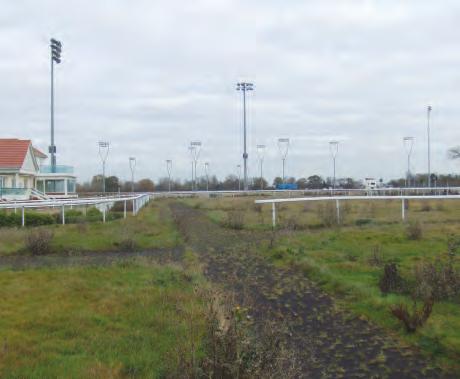
The irrigation system, which uses Briggs reels to apply the water efficiently, has been key in this driest of summers, with some 3 million litres applied. “We’ve got 10-12in root growth, so the turf has established really well, and it’s just a matter of the final preparations, including herbicide to knock back clover and fertiliser for continued growth. Verti-draining has been important to help get water and nutrients in, and for this purpose we’ve also recently invested in a 2.4m SISIS Megaslit

which can work to 25cm.”
Track mowing is another new regime to fit into the workload, and a Major triple roller mower has joined the armoury. “The mower offers a good finish and can work with our 50hp New Holland Boomer compact, making a lightweight combination. A front mount mower would have required a more powerful, heavier tractor up front, and seeing as we have the tractor capacity, it made more sense than buying a ride-on,” Andy explains.
The relationship with New Holland, which has its UK headquarters just half an hour away in Basildon and the long-established Ernest Doe and Sons dealership at nearby Braintree, has been extended with the addition of two new 180hp T6 tractors to the
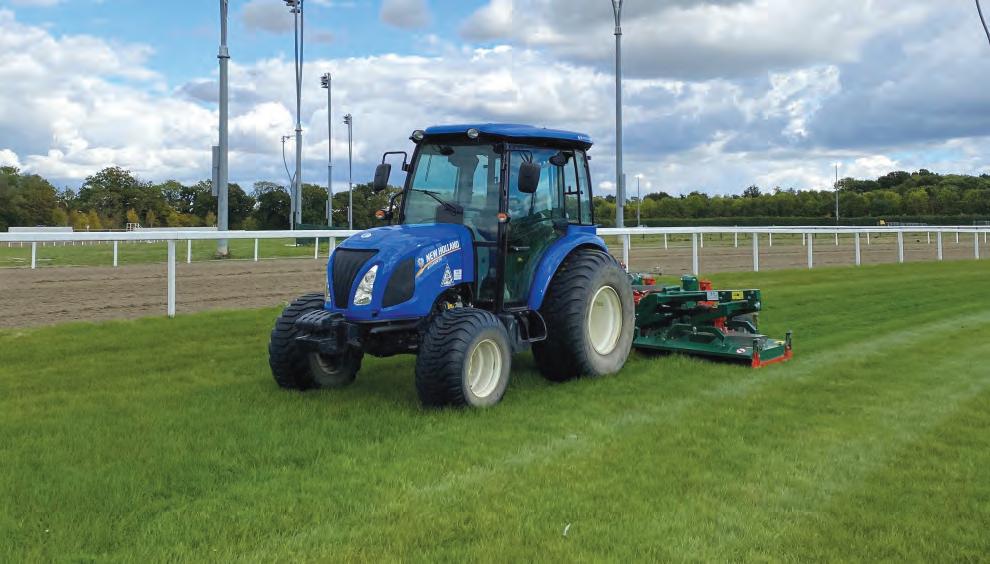 A New Holland Boomer compact tractor is used for most work on the turf track, including pulling a Major roller mower, a lightweight combination which gives a good finish
Presentation of the parade ring areas is key as racing takes place 12 months of the year
It’s a far cry from the scene that Andy had to tackle when the track had been closed after its previous owners went into receivership
A New Holland Boomer compact tractor is used for most work on the turf track, including pulling a Major roller mower, a lightweight combination which gives a good finish
Presentation of the parade ring areas is key as racing takes place 12 months of the year
It’s a far cry from the scene that Andy had to tackle when the track had been closed after its previous owners went into receivership
We need varieties that offer good recovery at the beginning and the end of the season, but we also get little rainfall, and the course is quite open and exposed
“We’ve purchased one and the other is part of a sponsorship arrangement,” he comments. “They’ll be used on the Gallopmasters and power harrow which maintain the all-weather track. The T6 offers plenty of lift capacity and has a great specification and cab - very different to the tractors used when I started my career!”

Completing the armoury is a 160hp Claas Arion, which will be retained mainly to work

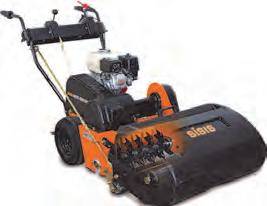
with the SISIS Megaslit.
All-weather racing takes place on the original Polytrack surface installed in 2007. The material is generally reckoned to have a 10-12 year lifespan, but a six year gap after the original Great Leighs racecourse business went into administration means it has less ‘miles on the clock’ than would have been expected. “It’s been re-waxed and had fibre added since the re-opening in 2015, and is inspected annually by PSD as part of
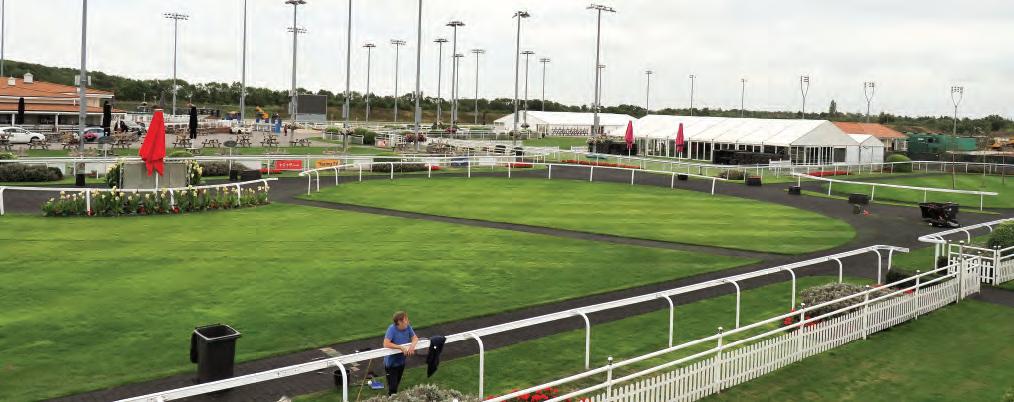

The 20m wide track has been designed with good sweeping bends, and a profile which gives a cross fall of less than 1cm on the straight and 4% gradient on the bends
our licensing requirements. The surface will need replacing at some point, but it is performing well at the moment,” says Andy.

Ongoing landscaping works in the centre of the course will add more events capacity and there are plans to add an overflow 38 box stable block to supplement the existing 134 stables for busy meetings.
One of the goals of the development is to bring higher class racing to Chelmsford City; the track already hosts two Listed races and Andy hopes that they can progress to Group races, including on the turf. “The format of the one mile circuit means that we can stage mile and a half races (the Epsom Derby distance) and we also hope to stage trials

for horses being aimed at the Breeders Cup - it’s the same layout as American tracks, being a left handed oval.”
A higher profile for Chelmsford City can only benefit the track’s all-weather racing activity too, at a time when interest in the all-weather scene has never been higher. Increased ITV coverage, the £1m prize fund All-Weather Championships, which now climaxes at Newcastle on Good Friday, plus the competitive Racing League have all in increased its following and its appeal to new audiences.
All-weather meetings offer a different spectator experience to many traditional racedays, with tracks offering a wide choice of hospitality and dining options at meetings which are often held in the evening and in inclement weather.
Chelmsford City has recently upgraded its 200-seater Fairwood Brasserie which serves a carvery or buffet style meal, while the Club Restaurant and Lounge offers a panoramic view of the course, and various marquees also accommodate racegoers
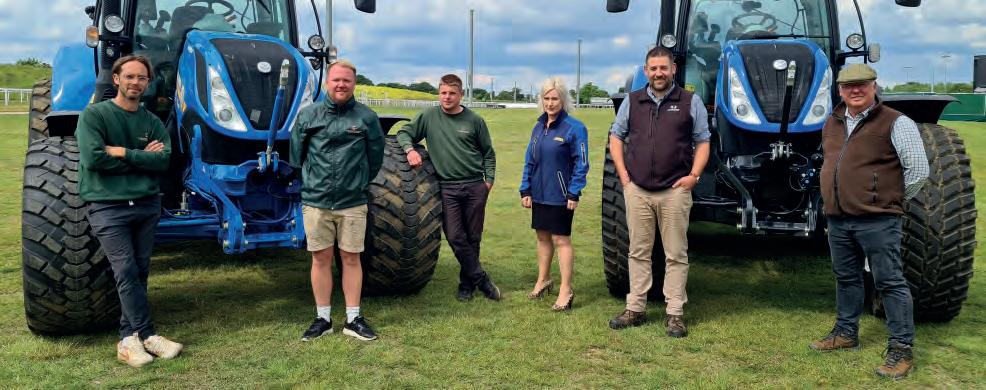
The relationship with local manufacturer New Holland has been strengthened with an agreement which sees a pair of higher horsepower T6 tractors added to the fleet
The BHA has its own standards for lighting which we have exceeded, and the new lights offer a quality of light suitable for high definition pictures for broadcast
“
There has been significant investment in machinery for the turf track, with a SISIS Megaslit purchased for deep decompaction


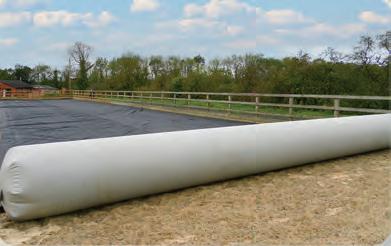



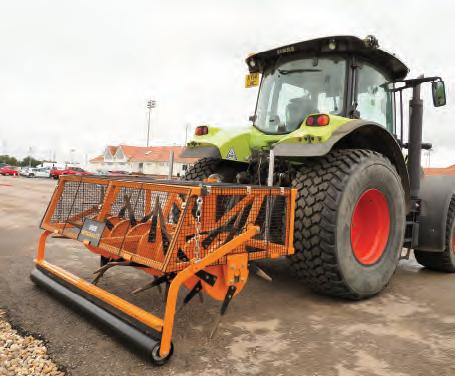
on the busier days, which can attract up to 10,000 spectators. Two new large screens have also recently been installed.

The parade rings and winners enclosure must remain pristine and colourful for twelve months of the year, all part of the task for the four-man team. The dry weather added to the workload recently by leading to the rubber block paving walkways dividing and needing to be re-laid.
One typical racecourse feature that is












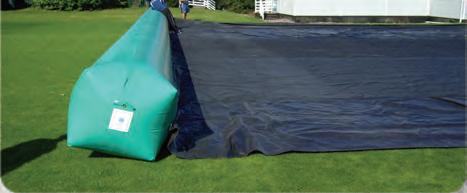








missing from the horizon is a permanent grandstand, but it remains in the long term plan, and being trackside to cheer on your pick of the paddock is a big part of the experience for many racegoers. If this year’s long, glorious evenings become a feature of British Summertime, and the crowds flock to Chelmsford City to see home-trained superstar horses make their bid towards Stateside glory, the arguments in its favour might be even stronger.
 Chelmsford’s famous tunnel which runs under the track to connect the stables with the paddock
Chelmsford’s famous tunnel which runs under the track to connect the stables with the paddock

Created within landscape designer Richard Woods’ 1764 concept, fashioned around 18th century Bretton Hall, it features world-renowned works by the likes of Henry Moore, Barbara Hepworth and Antony Gormley.
In 1977, Woods’ Grade II listed park and gardens took on fresh purpose when YSP opened. Today, six indoor galleries and 100 sculptures are scattered across the valley destination near Wakefield, adding drama and iconic settings to a rolling landscape whose north and south sides slope down to two ornamental lakes.
Open daily, except 24 and 25 December, the Park is a constant though satisfying challenge for Head Groundsman Will Grinder and his seven-strong team who must maintain a site of presentational excellence for the half a million visitors who throng the site annually.
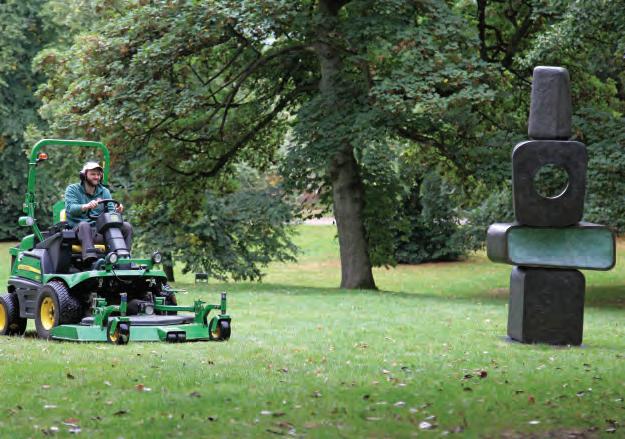
Diverse demand across the Park stretches from amenity grass and close-
mown turf to formal garden, arb work, water management and even a living roof on the Underground Galley, notes Mark Chesman, Head of Estates and Projects, who started life at YSP as a landscape co-ordinator.

“Exhibitions and events run year-round,” he says, “and visitors expect everything to look clean, tidy and well-maintained to set the sculptures off in their best light.”
The team runs a predominantly John Deere fleet, maintained annually in autumn by local dealer Balmers, with the cost spread over twelve months to help cashflow, Will explains, “We replace old machinery with new Deere units, such as our wide area and front deck mowers, which are covered by JD Powergard.”
Four diesel Gator TH 6x4s do the hard miles moving equipment, tools, material and green waste around the Park. “The six tyres help lower ground impact in more sensitive areas,” he says. “One of the units is fitted with a snowplough to clear paths, roadways and car parks in wintry weather.”
This is a wonderful place to work where staff tend to stay a long time. I’ve been here seventeen years and relish the daily challenges of this complex, beautiful place
“
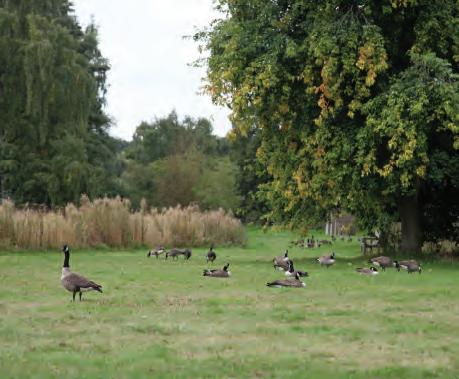
The latest utility vehicle, a Gator TE, falls within the vision to switch to electric machinery and tools under an environmental policy and action plan designed to reduce the use of fossil fuel and minimise impact on the climate. “It delivers zero emissions, has less vibration and is cheaper to run because it is a far simpler vehicle. We charge it up overnight using a three-pin plug and it runs all day.”
A JD 1600 turbo mower, with front and two side decks, and a 1580 ride-on collector mower tackle the 30 hectares of grassed open space around the hall to ensure a professional presentation ready for the start
of the season, exhibitions, and clearing leaves in autumn.
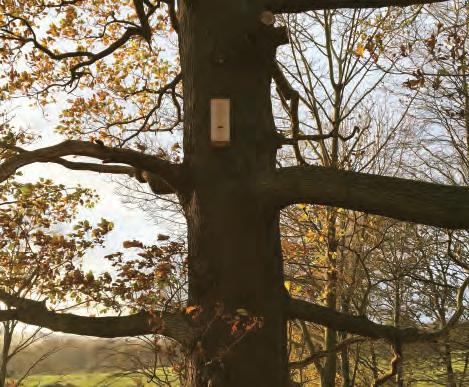
The team has to keep strict distance from sculptures when close mowing around them and other exhibition spaces in summereven using the John Deere 997 zero-turn ride-on mower - completing cutting with hand shears to safeguard the artworks.
Installing and replacing sculptures is usually a heavylift engineering exercise that involves the technical department and architects, which add specialist knowhow and equipment to the process. The grounds team handle excavation filling in and re-turfing but it all takes time, Will
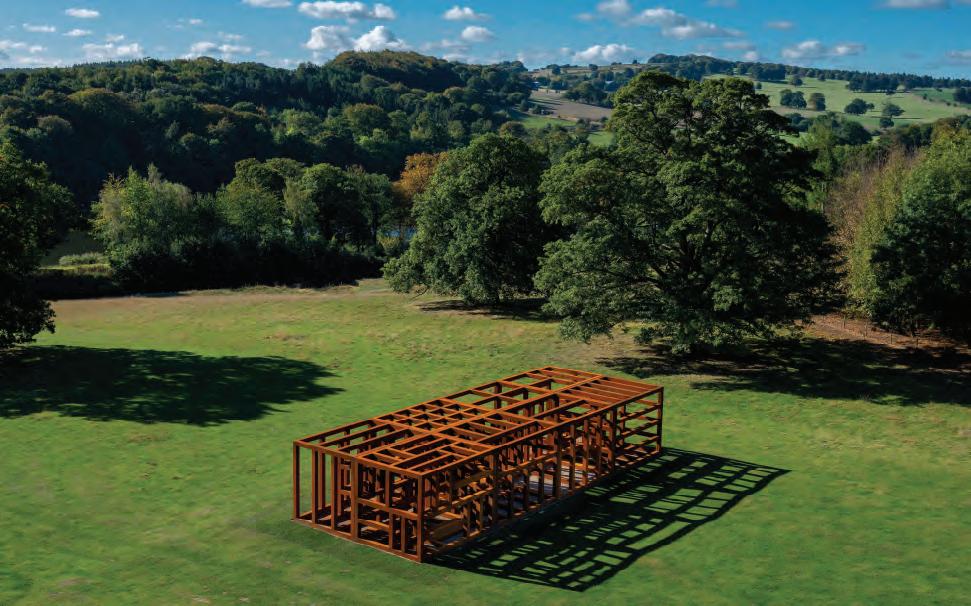 Canada geese
Pipistrelle bat box
Canada geese
Pipistrelle bat box
“ says. “Sculptures have to be anchored securely and positioned as the artists intend. Even smaller structures, such as Barbara Hepworth’s The Family of Man, are mounted on foundations 450mm deep. The utility vehicles ease the issue of transporting hardscaping such as precast concrete, spoil, sand, topsoil and rolls of turf to site.”
We complete work on four or five trees a year to help improve soil, while ceramic spheres absorb and retain moisture















In off-peak moments, it’s time to cut the living turf flat roof of the Underground Gallery. “We use a man-safe lifting system to hoist the walk-behind mower up to height,” Will explains.




The Park manages four stands of historic woodland of high conservation value that a number of native species such as oak, ash, beech and hornbeam, with some veteran specimens estimated to be more than 300

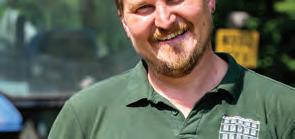

years old. All trees on the estate, including the 2,000 parkland specimens, are surveyed regularly. Arborists Earnshaws manage the large mature trees, while all the team are qualified to complete ground level work on branches up to 380mm diameter. “Warming climate presents a big challenge to trees, grass and flowers,” Will states. “In planting new species, we have to be mindful of how weather will affect them.”
Working within YSP’s ten-year historic landscape management plan, the team knows the continuing need to develop the estate and plant more trees - ones more resilient to climate-induced diseases for example. “Ash dieback is still affecting stock and we have to remain vigilant, but we’ve found that older specimens withstand it more than younger ones. We are very keen to keep our oldest veteran, thought to be
Nigel Allison, Grounds Manager, Newby Hall & Gardens, Yorkshire. Models from 1.9m to 7.3m in a variety of configurations

Delivers professional, versatile cutting from 10-150mm Fully galvanised for extended machine life High blade-tip speeds finely cuts and evenly disperses clippings














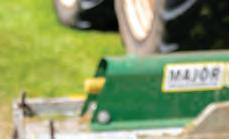
 Antony Gormley, One and Other, 2000.
Photo: © Jonty Wilde, courtesy: Yorkshire Sculpture Park
Antony Gormley, One and Other, 2000.
Photo: © Jonty Wilde, courtesy: Yorkshire Sculpture Park
“The finish from the Major Swift is superior to anything we have used.
400 years old.”
As a protective measure, young trees are clustered closer together in groves and groups in the woodland areas until they reach 30 to 35 years, when they are thinned out. In the main park, pollarding and other tree works helps maintain a healthy stock and keep visitors safe in windy or poor weather conditions, Will adds.
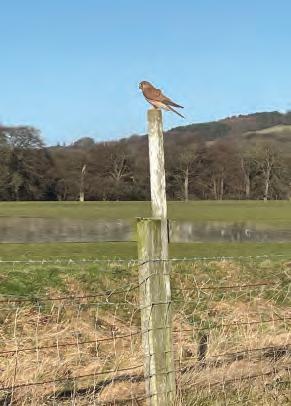
Even when felled, a tree can still hold a close bond with the sculptures. Antony Gormley’s One and Other work stands on a 7m tall tree monolith, startling against the sky amid dappled shade and cushioned by living greenery.
With no site irrigation per se, water retention is critical, especially given the hot, dry weather experienced of late. Mulching
laid around vulnerable specimens helps seal in moisture while avoiding impact on roots from mowers and footfall, while contractor Terrain Aeration sink a 1m probe to alleviate ground compaction across the site, hastened by the barrage of walking boots.

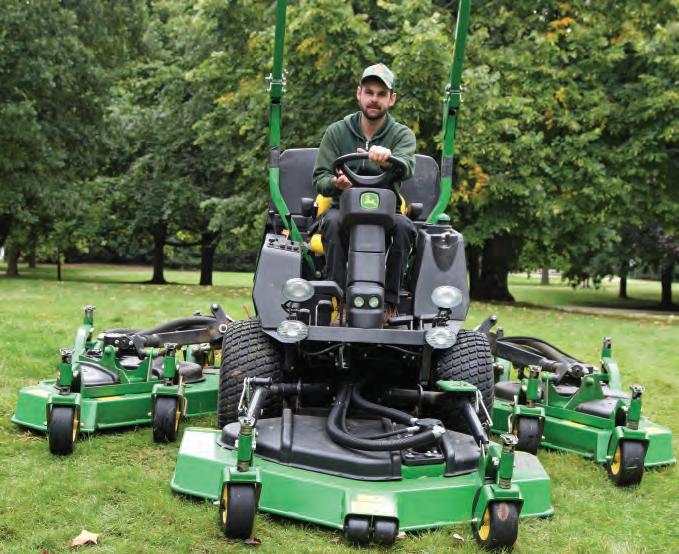
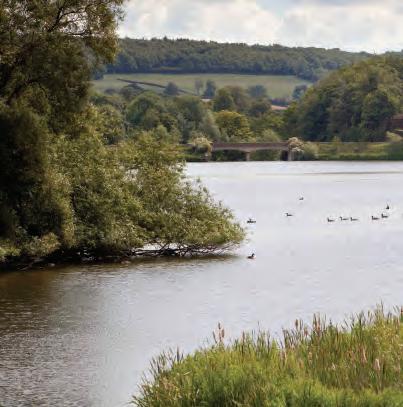
“It’s a continuing process,” says Will.
“We complete work on four or five trees a year to help improve soil, while ceramic spheres absorb and retain moisture. Apart from that, we rely on the elements to water the Park, but irrigate new plantings by hand to ensure they take. Impact on the ground is significant.”
The Park grows ever more popular as the exhibits constantly change, attracting both existing visitors and new ones. As the new 2030 plan kicks in, Will clarifies that they have a free hand on putting it into practice. “It’s up to us how we interpret the recommendations. I share an office with
We replace old machinery with new Deere units, such as our wide area and front deck mowers, which are covered by JD Powergard
Mark and we have daily dynamic discussions on what to action and when, building them into our routine work.”
Fauna and flora proliferate on the estate. Will says. “The pond in our formal garden is an important breeding site for great crested newts, a protected species throughout Europe. In the areas around the pond, we have created various hibernacula from logs,
breeze blocks and other materials to help them overwinter before re-emerging in the breeding season.”

Pipistrelle bats meanwhile roost in old buildings and sheds, with Daubenton’s bats preferring the lakes. Bat boxes provide three different types of roost including hibernation and breeding phases.
The serenity and diverse landscape of YSP attracts a welter of wildlife, including kestrels, sparrowhawks, several species
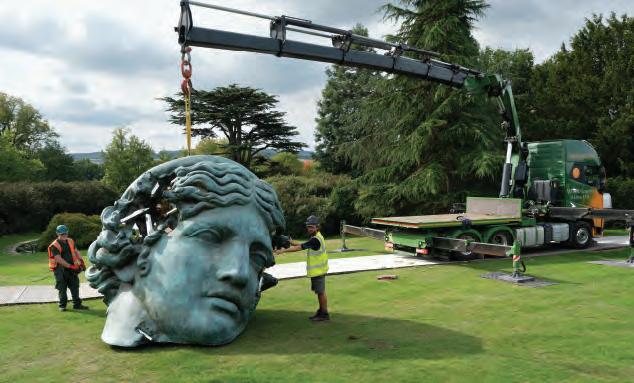
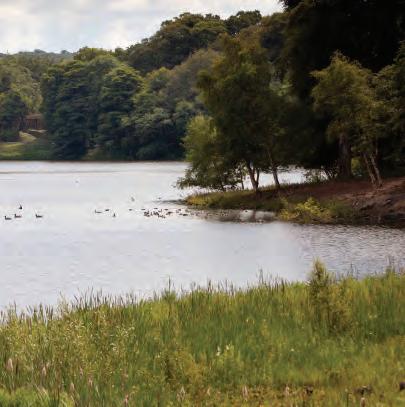 Lakes photo: © Jonty Wilde, courtesy: Yorkshire Sculpture Park
Daniel Arsham Unearthed Bronze Eroded Melpomene 2021, courtesy Perrotin Gallery and Arsham Studio.
Photo: © Jonty Wilde, courtesy: Yorkshire Sculpture Park
Lakes photo: © Jonty Wilde, courtesy: Yorkshire Sculpture Park
Daniel Arsham Unearthed Bronze Eroded Melpomene 2021, courtesy Perrotin Gallery and Arsham Studio.
Photo: © Jonty Wilde, courtesy: Yorkshire Sculpture Park
YSP offers amenity as well as an artistic value and we attract plenty of botanically aware visitors
“
of owl, and on the lakes, kingfishers, little egrets, heron, hooper swans, great crested grebe and Canada geese.
Although vast in scale when viewed aerially, the Park is segmented into discrete areas - the hall’s formal garden, lakes in the valley, visitor centre and six galleries, with new vistas opening up to reveal works of art screened in part by long stretches of yew, holly and rhododendron and azalea, which in themselves create valuable biodiversity habitats.
The site is resplendent with native wildflowers - early purple orchid, celandine, umbelliferous varieties and yellow rattle to name only a few - but Will is planting ones too. “YSP offers amenity as well as an artistic
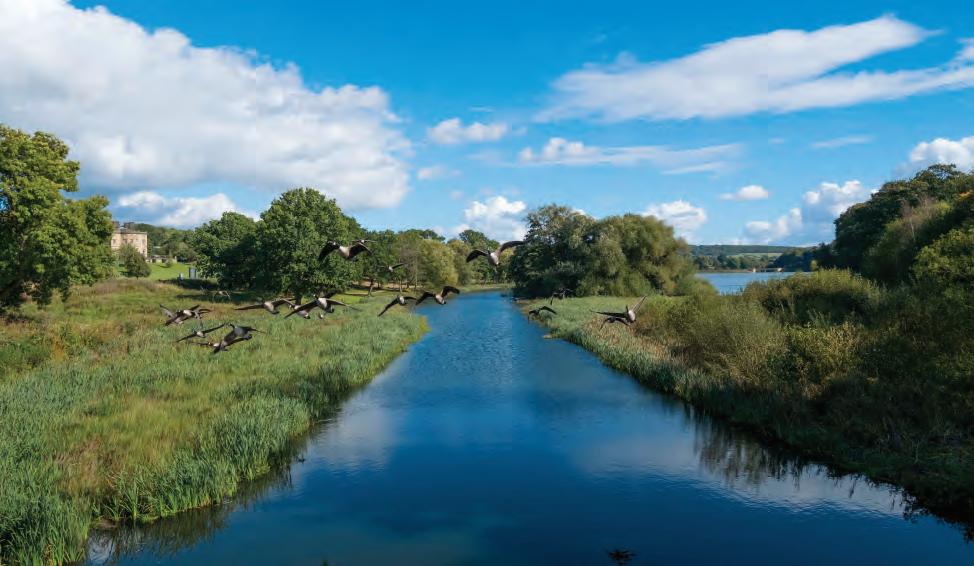

value and we attract plenty of botanically aware visitors. This year, we took off an area of turf to cultivate the soil with annual wildflowers. They prefer to grow in nutrient poor conditions, so we don’t add anything.”
Former barrister’s clerk, Will, switched career path after realising the law was not his vocation. He took a BSc in Countryside Management instead, while working at Askham Bryan, York, moving on to a twoyear spell at Malham Tarn Estate then Hardcastle Crags, Hebden Bridge. Working as an amenity and sportsturf casual on school football, rugby and cricket grounds, he then moved to re-landscaping golf
Barbara Hepworth, The Family of Man, 1970. Lent by the Hepworth Estate. © Bowness, Hepworth Estate. Photo: © Jonty Wilde, courtesy: Yorkshire Sculpture Park Lakes photo: © Jonty Wilde, courtesy: Yorkshire Sculpture ParkExhibitions and events run year-round and visitors expect everything to look clean, tidy and well-maintained to set the sculptures off in their best light
courses in the North Leeds and Wakefield area. “I was, and am, very interested in conservation and living locally, so applied to YSP for the position.”
After five years in Chesterfield Council’s parks and countryside department, Gabriel Mason-Dixon, was drawn to YSP. “He impressed me at interview with his motivation to work in a world-renowned place,” Will recalls. “Gabriel is highly conscientious and has invested a lot of time
and knowledge here.”
Starting life in YSP’s facilities department, Nick Hill has brought to the estate team a wealth of practical experience and expertise with a passion for conservation - he is really enthusiastic and learning all the time.”
Simon Parker comes to YSP after completing his horticultural traineeship at Wrest Park in Bedfordshire. “His background working for English Heritage at the Park is an important part of how we manage the

estate,” Will says, “particularly his role in keeping to the original layout and plantings of Bretton Hall gardens, which we have studied from old photographs.”
Short staffing during the Covid pandemic, when team members left for pastures new or moved away, has been solved recently with recruitment of Richard Stringer, who has experience with managing Spanish olive groves. “We’re putting him through his chainsaw and brushcutting qualifications
 Will at work on the John Deere TE electric Gator
Will at work on the John Deere TE electric Gator
This year, we took off an area of turf to cultivate the soil with annual wildflowers. They prefer to grow in nutrient poor conditions, so we don’t add anything
“
now,” Will confirms. With the appointment of Philip-Hocart Boswell, formerly a volunteer at Yorkshire Wildlife Trust’s fenland remnant, Potteric Carr.
Claire Midwood has worked here 14 years. “She’s highly knowledgeable on flora, fauna and foraging,” Will explains, “with a specialism in mycology. You’ll spot her eyeing fungi on rotting logs or investigating fairy rings.”
Like many large public access estates, YSP relies on volunteers to supplement the work of the grounds team. “We have eight here,” Will notes, “who spend much of their time helping remove the huge quantity of leaves. They rake off the meadows and keep margins weed free.”
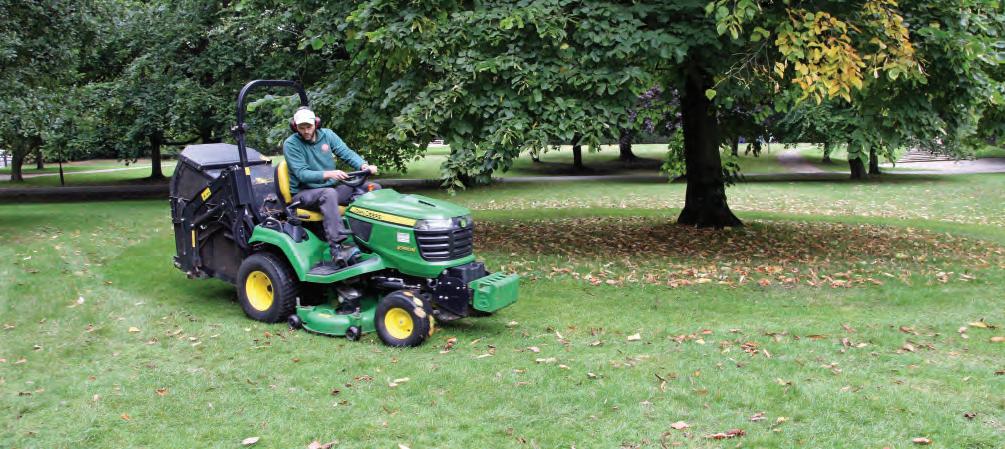
Given the number of YSP visitors, training the team in interpersonal skills is vital. “Every member is versed in public facing and can administer emergency First Aid. We also have two defibrillators on site.”

Ensuring YSP delivers an Access All Areas strategy means plenty of team time keeping public footways safe. “The length of paths and roadways we are responsible for maintaining is 15 to 20 linear miles,” Will estimates. “The Breedon gravel paths allow mobility scooters to run on them safely. Path edges need to be kept trim and we take access into account when replacIng gates for example.”
Pop into one of YSP’s two shops and you’ll spy jars of honey for sale. “A member of the public looks after five beehives on the borders of the estate,” Will reveals. “You can’t get more local than that.”
In such a glorious and invigorating setting, Mark sums up the team sentiment when he states: “This is a wonderful place to work where staff tend to stay a long time. I’ve been here seventeen years and relish the daily challenges of this complex, beautiful place.”



Electric turfcare machinery is, as we know, the future of the industry, it’s the reality we’re moving towards. Many greenkeeping professionals are understandably concerned about how this will impact their business, especially economically
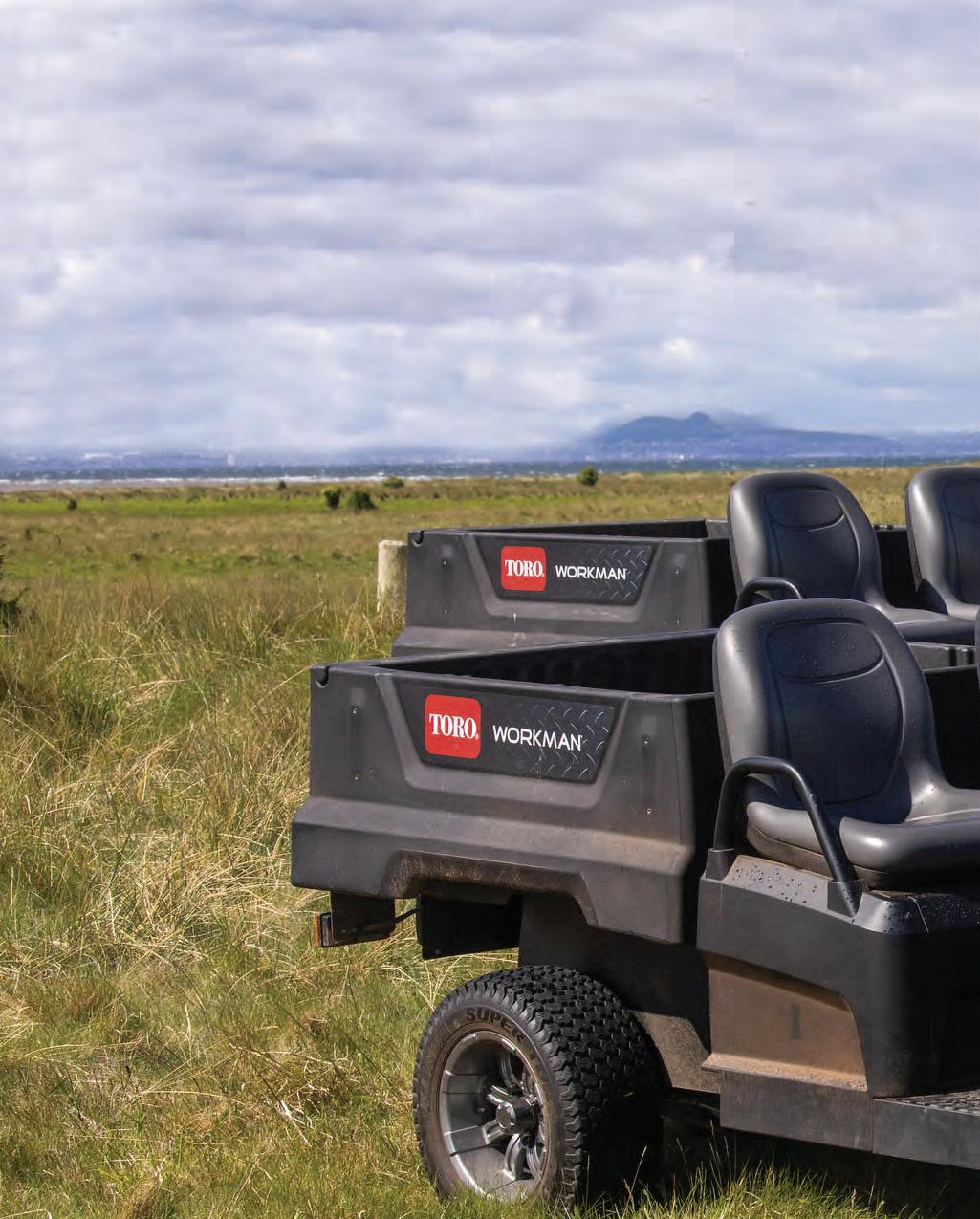
Here, Lee Rowbotham, service manager at Reesink UK, the UK distributor of Toro Commercial products, the manufacturer who was pioneering in making battery-powered machinery a reality for the turfcare industry, considers the comparisons and crunches the figures

The technology and the products have been in use in real life situations in the UK for long enough for distributor Reesink UK to be able to put doubts to rest about the true cost of ownership of electric turfcare machinery.
There will always be a role for both petrol and diesel machinery, that goes without saying, but what we’re seeing is a spearheading in the journey of electricpowered machinery. We’re now at a stage in the evolution of the technology that the cost of buying electric equipment is much more achievable, and with the recent economic downturn and the cost of petrol/ diesel hitting an all-time high, they’re reaching a peak.
Long gone are the days when electric
machinery was so expensive to buy up-front, only the very wealthy few could afford them. Not only that, but their performance and build quality also left a lot to be desired.
Nowadays, the cost of buying electric equipment has gone down significantly, and with the cost of petrol hitting an all-time high, electric power has become much more appealing. Performance has also improved to the point where most of these machines can be as good as the diesel units or even better in certain aspects: manoeuvrability, drivability, automation, connectivity, and lightness of materials that make it kinder to turf. Not to mention the environmental benefits like quiet operation and lack of emissions and no hydraulic fluid leaks.
But how much will it cost?
First, there are two sides to consider: the ownership cost and the operating cost.
Or, in simple terms, the cost of buying and keeping a machine in the fleet (including purchase price, taxes, cost of borrowing, insurance and residual value at the end of its life) versus the costs of fuel, maintenance, repairs, tyres and parts of that machine.
This means the purchase price is much less of a consideration, as a lower purchasing cost may suffer from higher maintenance costs and vice-versa. Plus, you must factor in productivity, as two machines with equal operating costs may work differently and produce very different results.
Still confused? Let’s break it down.
The cost of ownership allows you to work out not just the costs, but the profits from the machine - something easily achieved by working out production, cost-per-hour and cost-per-unit.
Ownership costs decrease the more hours the machine works, while operating costs work the other way around: they start small and tend to grow as the machine is used.
At one point, these two values combined produce the lowest total cost per hour, making up the ‘economic life’ of the machine (this is different from its ‘physical life’).
By collecting data, you are more equipped to make informed decisions about the best way to acquire and manage your fleet. With the arrival of electric, hybrid and even autonomous machines, the cost of ownership will naturally decline as components become more common and thus, more available.
This number is already 20 percent lower for BEV (battery electric vehicles) than for ICE (internal combustion engine) machines, and the operating cost as well. The only downside is the up-front cost, which is still higher than those of ICE machines.

However, the strict regulations imposed around the world, more specifically from the EU and China, regarding nitrogen oxides and particulates, are already a big proponent towards electric adoption, as these machines will make it much easier
to achieve these emissions and noisepollution standards.
There is still a long way to go for mass acceptance of this new reality, but make no mistake: it’s slowly but surely catching up in the industry and those unaware of what it all means may very well be left behind.
Electric turfcare equipment is powered by rechargeable lithium-ion batteries and the electricity required to charge them is less than most people think - between 35 and 120 volts. It’s easy to track how much energy is consumed from the batteries via the info centre on the machine, and knowing how much you pay for a unit of kWh will enable you to work out how much it costs to charge.
If we look at an electric-powered greens mower, with a fully charged battery pack (10.77kWh) that uses 70 percent of its energy to cut all 18 greens, then around 7.5kWh is taken from the batteries. Most chargers are 90 percent efficient, so to charge the battery back to full capacity means it will take around 8.29kWh from a mains supply -
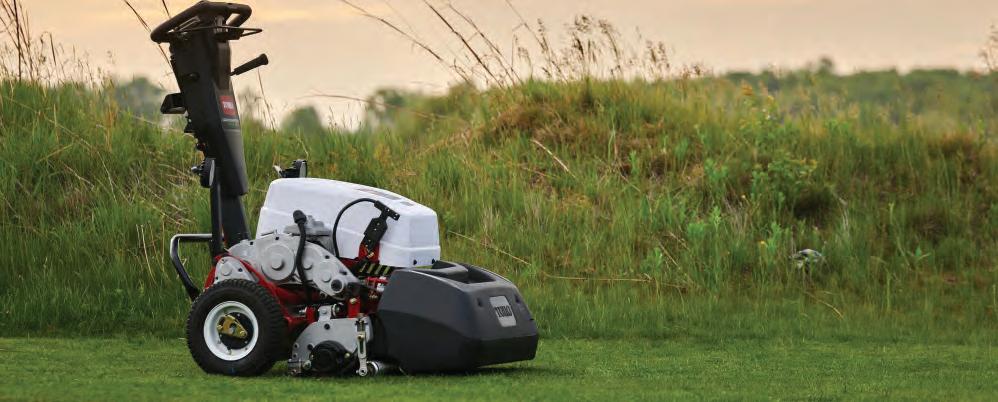 The all-electric Toro Greensmaster e1021 - one of the quietest and most efficient pedestrian greens mowers
Battery charging points
The all-electric Toro Greensmaster e1021 - one of the quietest and most efficient pedestrian greens mowers
Battery charging points
Electric turfcare equipment is powered by rechargeable lithium-ion batteries and the electricity required to charge them is less than what most people think

8.29kWh times £0.28 per kWh equals £2.32 per charge.
If we take this amount and divide it by the hours taken to cut the greens (let’s say, three hours), we get an hourly running cost of £0.77 per hour. Thus, a diesel engine cutting 18 greens, using approximately 5.25 litres of red diesel at £1.09 per litre, would cost around £1.91 per hour.
When it comes to efficiency, there are significant differences. A petrol engine is approximately 40 percent efficient, and diesel 60 percent efficient at converting fuel into mechanical energy. A large proportion of the available energy is wasted as heat. There are also additional losses of the hydraulic system on top of the engine
efficiency. Whereas an electric motor can be over 85 percent efficient at converting electrical energy into mechanical energy.
A combustion engine/hydraulic machine is a three-step process: first, chemical energy from fuel is converted to mechanical energy, which is then converted to hydraulic energy (flow and pressure) and then back to mechanical energy at the hydraulic motor. Every time the energy is converted, more losses are introduced.
An electric machine is only a two-step process: the battery’s chemical energy gets converted to electrical energy, which is then converted to mechanical energy at the motor.

Some of the cost savings of electric versus combustion engine/hydraulic machines are down to how the energy is
used: an electric machine only uses energy when one of the systems is doing work. If it’s standing still with the key on, very little energy is used - just a small amount to run the control system.
However, on a combustion engine/ hydraulic machine, as long as the engine is running, the hydraulic pumps are always pushing oil around the machine’s circuits, even if it is standing still and no work is being done. This can use a considerable amount of fuel just to run the system over the machine’s lifetime.
When it comes to maintenance costs, electric machines don’t have motor oil, spark plugs or filters to change - all they require is cutting units maintenance to keep
There is still a long way to go for mass acceptance of this new reality, but make no mistake: it’s slowly but surely catching up in the industry and those unaware of what it all means may very well be left behind
the machine in optimal condition. Diesel mowers, on the other hand, have a lot more moving parts and therefore require more maintenance, servicing and repairs.
Of course, in time the battery in the electric mower will need replacing, but with a lifetime of approximately seven years (depending on operating conditions), this is little bother.
Taking all of this into account, the upshot is that electric machinery, although usually more expensive to buy upfront, boasts lower running and maintenance costs that will even out some of the costs of ownership in the end.


Also worth considering is that the purchase price will likely come down as
these units and their components become more and more common. And, with increase in demand and technological advancements, there will soon come a time when this cost will rival those of current diesel machines, making that initial investment no longer a problem.
Toro’s electric machinery options
Toro launched its first hybrid option back in 2011 with the Toro Greensmaster TriFlex Hybrid 3420 riding greensmower, but its breakthrough happened in 2020 with the Greensmaster eTriFlex 3370: the industry’s first lithium-ion battery powered ride-on greensmower. Being one of the quietest ride-on greensmowers on the market, it allows customers to respond to business demands for increased revenue by cutting earlier and therefore delivering earlier surface availability to customers. It has become a firm favourite and will likely continue to be a staple in many greenkeeping businesses all over the world. Since then, Toro has made other electric turfcare machinery and vehicle options available, and will continue to invest in research and development to produce more, all of which will not only make your business more sustainable but also more productive.
To talk to someone about Toro technology and how the Toro range could suit your course, call 01480 226800.
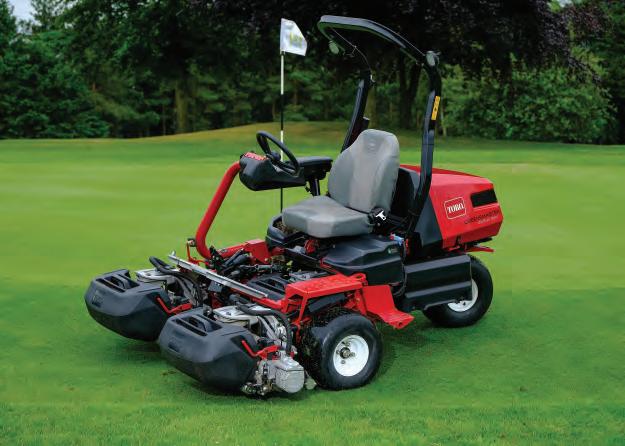 The Greensmaster eTriFlex 3370 delivers the future to the fine turf sector
Lee Rowbotham, service manager at Reesink Turfcare
The Greensmaster eTriFlex 3370 delivers the future to the fine turf sector
Lee Rowbotham, service manager at Reesink Turfcare
The strict regulations imposed around the world, in regard to nitrogen oxides and particulates, are already a big proponent towards electric adoption
Long gone are the days when electric machinery was so expensive to buy up-front, only the very wealthy few could afford them



Earn BIGGA, Lantra and BASIS CPD points as you learn
With a real ‘recruit, reward and retain’ crisis still raging, popular trainer and conference speaker Frank Newberry explains what he is currently doing to help people to get better jobs, and pay rises, in the turfcare sector. He answers the question - should you stay in the turfcare profession, or should you leave?

You may have already heard that people are leaving the turfcare professions. The number of unfilled job vacancies in the turfcare professions has been increasing. A recent BIGGA report suggests that more than half (53%) of employers are carrying vacancies at the moment. Workwise, the people who have not left their jobs are having to cover for those who have left.
The research also indicates that, although more than half of greenkeepers are happy working in the profession, more than a third (35%) are looking for opportunities OUTSIDE the profession.
This ‘looking for opportunities outside the profession’ might also be the case in the other turfcare/groundscare/landscaping professions in the UK. If it is - then more
than one in three people in the sector have already answered the question ‘Should I stay, or should I go?’ They are going.
You may also have heard stories about people making more money driving a delivery van than they were paid as a greenkeeper. If you are on basic greenkeeping wages, and you are fit, and have a clean driving licence, and you do not mind working on your own all day - then it must seem (excuse the pun) that the grass is actually greener - in a driving job!
I think that you should stay in the profession. Of course, to progress to the higher paid levels in greenkeeping will need effort on your part and education. I want to make the case for the type of education that can, and will, directly impact your career and
Every year, I coach and train turf care professionals and others on how to get a good job. This training is organised by membership organisations like FEGGA, the GMA and BIGGA. With potentially 53% of employers currently carrying vacancies, there should be good job opportunities for people like you all over the place.

Right now might be a good time for you to look for a better job, or better pay INSIDE the industry. People like me can help you in that endeavour.
So far this year, I have worked with greenkeepers from Croatia, Denmark, Iceland, Finland, Sweden (see photo), Slovakia, South Africa, Spain and the United Kingdom. All of them are now better able to identify an employment opportunity, write a great CV, apply for
good jobs, pass job interviews and negotiate good pay packages.
By the time you read this, I will also have spoken at SALTEX 2022 (at the NEC) on ‘Negotiating Your Pay and Perks’. To this, we can add a panel discussion I took part in called ‘Recruit, Retain and Reward’ with Steve Lloyd (Chairman of BIGGA) and Carol Doran (GMA Board Member).
Again, by the time you read this, I will have had meetings in another European country to talk about how this vital and very specific training can be rolled out to hundreds more people in the turfcare professions.




Of course, you already have skills that are valuable to an employer in the sector - you just need to agree with your employer how much those skills are worth. This is what your career skills education and training is all about.
Sure, you can get higher starting pay in some other professions - but the work, and eventually the wages, will be better in the turfcare professions - especially if you continue to build your skills - in particular your negotiating skills.
A lot of employers are in for a shock
I believe the research I have been quoting results from was done before the current ‘cost of living crisis’ sent the rate of inflation
over 10% and, at the time of writing, the rate looks set to go even higher.
With more than 70 percent of golf clubs already not following the Committee for Golf Club Salaries guidelines on pay for greenkeepers, a lot of employers are in for a shock when people like you start to negotiate a big cost of living pay rise!
Of course, we must not forget one thing that you may have already tried i.e. ‘strategic’ job hunting. You might have gone on a few interviews (inside and perhaps outside the profession), maybe got an offer or two, and then gone back to your current employers and asked for a matching or better salary offer. And why not?
In closing, let me quote BIGGA CEO Jim Croxton. Speaking of BIGGA’s survey results, Jim said: “The key is what the game of golf does with this information.”
In response to Jim, I can at least, as a trainer in the turfcare sector say what I have been doing.


© 2022 Frank Newberry
can learn more about negotiating and other key career skills by getting in touch with Frank on his personal website www.franknewberry.com. Just click on the ‘Contact’ tab.


“Frank has helped many people over many years go onto greater roles and helped coach many people. A true legend of Learning Live.” Geoff Webb, CEO Grounds Management Association.
“If you have never done a course with Frank, I would get signed up fast ... You will have a fantastic time while learning invaluable life skills for your career.” Jake Snyman, Director of Agronomy, Alamo City Golf Trails, San Antonio, Texas.
“I have been extremely impressed with Frank’s work.” Jon Roycroft, Director of Sport, Oxford University.




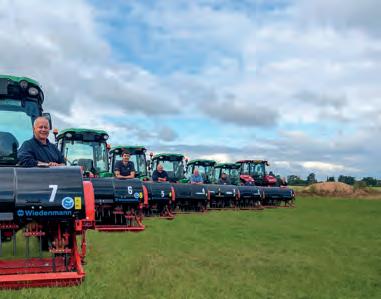

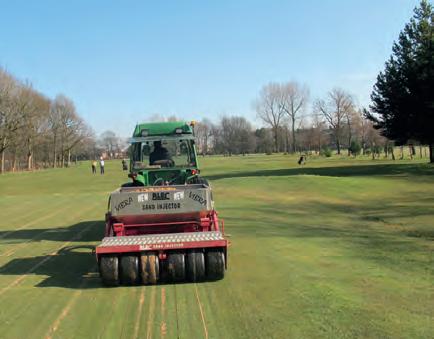














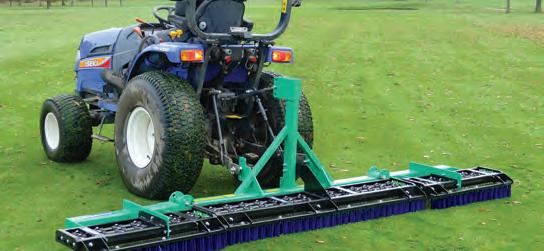
































































































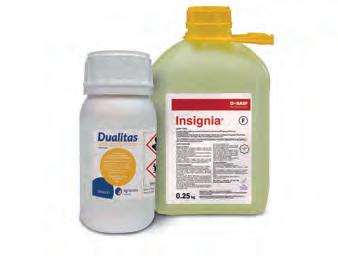





Portuguese legend Luis Figo and a team of international players put their skills to the test in zero gravity to break a Guinness World Record for a high altitude game of football.
The Guinness World Record attempt, organised by Mastercard, saw Figo and a team of players from around the world board
a plane specially outfitted with an on-board football field and the flight took a parabolic path to simulate zero gravity for the game at 20,230 feet.

The game officially broke the Guinness World Record for highest altitude game of football (soccer) on a parabolic flight.

“Football transcends boundaries and unites people around the world. I have played in stadiums where the electric atmosphere sparks emotions that cuts across cultures and nationalities; this was the exact same experience I had playing this beautiful game at 20,000 feet above ground,” Figo said.
Number 10 on the list of the Most Absurd Sports of All Time is bagged by none other than chess boxing. Now, you must be relieved that this is not such a difficult or stupid game.

This game just tests your mental as well as your physical abilities to fight an opponent. But let us just warn you, this is just the beginning of the list. Chess players are considered to be calm and strong-minded.

Playing chess helps people in making better decisions and do better things. When you
combine a safe game with a violent one, mayhem happens. The switch between a calm and ferocious mentality within seconds is very challenging to overcome.
We’ve all heard stories about golfers looking around the green for their golf ball only to finally check the cup and discover they’ve made a hole-in-one. But,
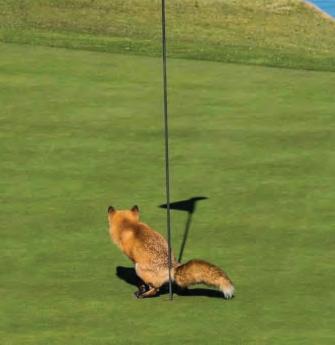
on the PGA Tour, such a scenario is highly unlikely.
During the first round of the 2022 Sanderson Farms Championship, MJ Daffue was a surprise leader during the second round of this year’s U.S. Open, but he got a pleasant surprise when he arrived to the green of the par-3 fourth hole at the Country Club of Jackson.

The South African starts looking around for his golf ball before being told, “It’s in the hole,” by a volunteer. If you’re a volunteer at a PGA Tour event and you see someone make an ace, maybe make a bit more noise.
Alexa - Show me a picture that proves grassroots parents are absolutely amazing. “When you can’t find the rest of the goal they do this to keep the game going.”

When you’ve got to go, you’ve got to go!
If you spot anything you think might give readers a chuckle send it to: kerry.haywood@pitchcare.com
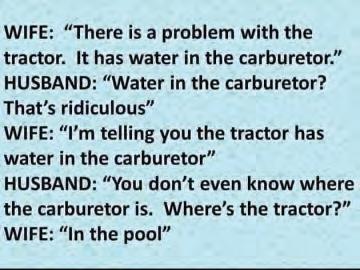
2nd-3rd: Industry - GMA SALTEX, Birmingham NEC (saltex.org.uk)
5th: Rugby Union - Autumn Internationals, Scotland v Fiji, Murrayfield; Wales v New Zealand, Cardiff; Ireland v South Africa, Dublin; France v Australia, Paris (autumninternationals.co.uk/2022)
6th: Rugby Union - Autumn Internationals, England v Argentina, Twickenham (autumninternationals.co.uk/2022)
8th-12th: Rugby Union - Women’s International World Cup, New Zealand (rugbyworldcup.com)
8th-13th: Tennis - Billie Jean King Cup Finals, Glasgow (billiejeankingcup.com)
11th-13th: Horseracing - The November Meeting, Cheltenham Racecourse, Gloucestershire (thejockeyclub.co.uk)
12th: Rugby Union - Autumn Internationals, Ireland v Fiji, Dublin; England v Japan, Twickenham; Wales v Argentina, Cardiff; France v South Africa, Marseille (autumninternationals.co.uk/2022)
13th: Rugby Union - Autumn Internationals, Barbarians v All Blacks, Tottenham Hotspur Stadium; Scotland v New Zealand, Murrayfield (autumninternationals.co.uk/2022)
19th: Horseracing - Discover Racehorse Weekend, Ascot (ascot.com)
19th: Rugby Union - Autumn Internationals, Wales v Georgia, Cardiff; Scotland v Argentina, Murrayfield; England v New Zealand, Twickenham; Ireland v Australia, Dublin (autumninternationals.co.uk/2022)
20th: Rugby Union - Autumn Internationals, France v Japan, Toulouse (autumninternationals.co.uk/2022)

21st-18th December: Football - FIFA World Cup, Qatar (fifa.com/worldcup)
25th-26th: Horseracing - Coral Gold Cup Meeting, Newbury (newburyracecourse.co.uk)
26th: Rugby Union - Autumn Internationals, Wales v Australia, Cardiff; England v South Africa, Twickenham (autumninternationals.co.uk/2022)
“This is a tough situation but it is also a challenge. We always face challenges but we go for it and I am sorry to all our people who expected that after last season we go again and fly again and compete for everything. And now it is not the case.” Jurgen Klopp says Liverpool FC can fly again despite their slow start to the season.
“We recognise that this will not only impact on our players, staff and supporters, but also Exeter Chiefs and the wider rugby community.” Financially troubled Wasps have announced they are “likely” to go into administration within days.
“I had a heart-breaking zoom call with my surgeon before surgery. He pretty much told me it wasn’t happening. I had to do it so it was a ‘tough luck, suck it up’ attitude.” When England wing Abby Dow broke her leg six months ago, a surgeon told her she would not make it to the World Cup.
2nd-3rd: Horseracing - Betfair Tingle Creek Festival, Sandown Park, Surrey (thejockeyclub.co.uk)
15th: Horseracing - Christmas Raceday at Exeter, Devon (thejockeyclub.co.uk)
18th: Football - Football FIFA World Cup final, Lusail Stadium, Qatar (fifa.com/worldcup)
1st: Happy New Year
1st: Horseracing - New Year’s Day Racing at Cheltenham, Gloucestershire (thejockeyclub.co.uk)
24st: Horseracing - Peter Marsh Chase Day, Haydock Park (thejockeyclub.co.uk)
25th: Merry Christmas 26th-27th: Horseracing - Ladbrokes Christmas Festival, Kempton Park (thejockeyclub.co.uk)
26th: Football - Premier League season resumes after World Cup (premierleague.com)
“That feeling, I can tell you, was better than sex. It was unbelievable, it’s giving me goose bumps everywhere thinking about it. I cried like a baby when I left Watford.” When Adam Masina recalls his time at Watford, there are a mountain of memories; scoring an orgasmic goal, the pride at promotion, the disagreements with Roy Hodgson and the tears at finally leaving.
“A lot of traditionalists are scared how (the competition) will impact the world game. But why can’t South Africa have its own league? Why is that wrong? All of the top teams around the world have one of their own. South African cricket now has a seat at the table. World cricket couldn’t afford to see South Africa fade away.” Graeme Smith on why new T20 league is imperative to South Africa’s future.
22nd-25th: Industry - BIGGA Continue to Learn, Harrogate Convention Centre (btme.org.uk/continue-to-learn)
24th-26th: Industry - BIGGA Turf Management Exhibition 2023, Harrogate Convention Centre (btme.org.uk)
“If you give me a five-year contract and you sack me after year three, I will wait out the years on my contract, and I will make you pay every single rouble or euro.” Last May, after Luciano Spalletti’s beloved Fiat Panda was stolen, Napoli’s ultras placed a banner outside the stadium promising the car would be returned - if he left the club. Now those fans are being made to eat their words.
“We welcome the sport’s greatest contemporary athletes and the most diverse playing population to have ever assembled in the sport. It is fundamentally important that we succeed - it means more people will engage with the sport.” Tournament’s chief executive Jon Dutton as the Rugby League World Cup is finally set to get under way.
Abby Dow







































